 "/>
"/>
 "/>
"/>

設(shè)計(jì)單位|柯笠建筑 Atelier LI
項(xiàng)目類(lèi)型|建筑設(shè)計(jì)
項(xiàng)目地點(diǎn)|找個(gè),上海

Sous le ciel noir nous voyons clair
La lampe est pleine de nos yeux
Nous habitons notre vallée
Nos murs nos fleurs notre soleil
Nos couleurs et notre lumière
La capitale du soleil
Est à l’image de nous-même
Et dans l’asile de nos murs
Notre porte est celle des hommes
Paul Eluard
創(chuàng)作一座園林是一種生成(devenir),生成一個(gè)配置(agencement)與外部世界相連。根據(jù)法國(guó)哲學(xué)家德勒茲(Gilles Deleuze)的理論,生成—園林是一處根莖(rhizome),它對(duì)傳統(tǒng)古典園林進(jìn)行了解域(déterritorialiser)后的再結(jié)域(reterritorialiser),園林被解域,與現(xiàn)代住宅系統(tǒng)相遇再重新結(jié)域,沿著逃逸線(ligne de fuite)繪制自身的地圖(carte),形成一處新的根莖。根莖式的藝術(shù)創(chuàng)作無(wú)需扎根,只需沿著抽象線加速穿越(passer entre),放射出微觀的粒子(des particules microscopiques),生成分子性的藝術(shù)配置,進(jìn)行一種游牧式的創(chuàng)作。新的創(chuàng)作是根莖式的、游牧式的,讓層與根產(chǎn)生斷裂,沿著逃逸線形成自由的筆觸,模仿與譜系是拙劣且無(wú)趣的,不需要扎根,沒(méi)有開(kāi)端沒(méi)有終點(diǎn),根莖游牧民繪制自身的地圖,成為處于之間(être-entre)的分子性的存在。
Garden design is a kind of becoming, to become an arrangement that could be connected with the world. According to the theory of French philosopher Gilles Deleuze, becoming-garden is a rhizome, which deterritorializes classic garden and then reterritorializes it when meeting residential system of modern architecture, drawing its own map along the line of flight to become a new rhizome. Artistic creation of rhizome rather than to take root only needs to speed up and pass through along the abstract line, radiating microscopic particles, becoming molecular artistic arrangements, and performing nomadic creation. The new creation is rhizomatous and nomadic, breaking the connection between layers and the root, forming free brushes along the line of flight. Imitation and pedigree are clumsy and boring, no roots no beginning and no end point, rhizome-nomads drawing their own maps, becoming molecular being-among.
01 一畝園(方案)
One Mu Garden
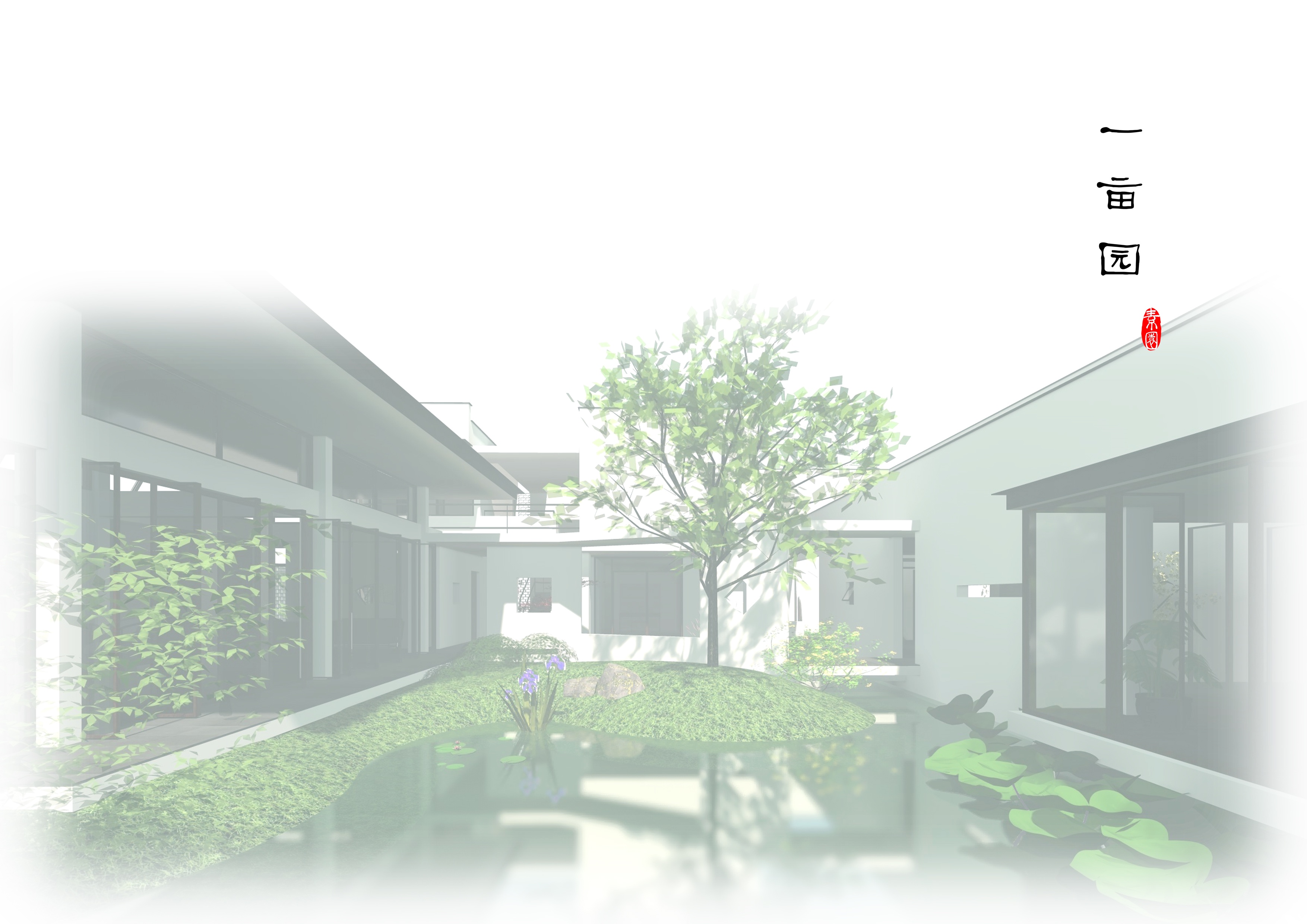
主園 Main garden ?柯笠建筑 Atelier LI
2016年的夏天,我們?cè)谔K州設(shè)計(jì)了一畝園。基地選擇是意境內(nèi)向化的,我們想創(chuàng)造一個(gè)內(nèi)在氛圍遠(yuǎn)大于外部環(huán)境影響的園林居所。
In the summer of 2016, we designed One Mu Garden in Suzhou (one mu = 666.67m2). The site selected is introverted. We wanted to create a garden-residence, where the inner atmosphere is much more important than the surrounding environment.
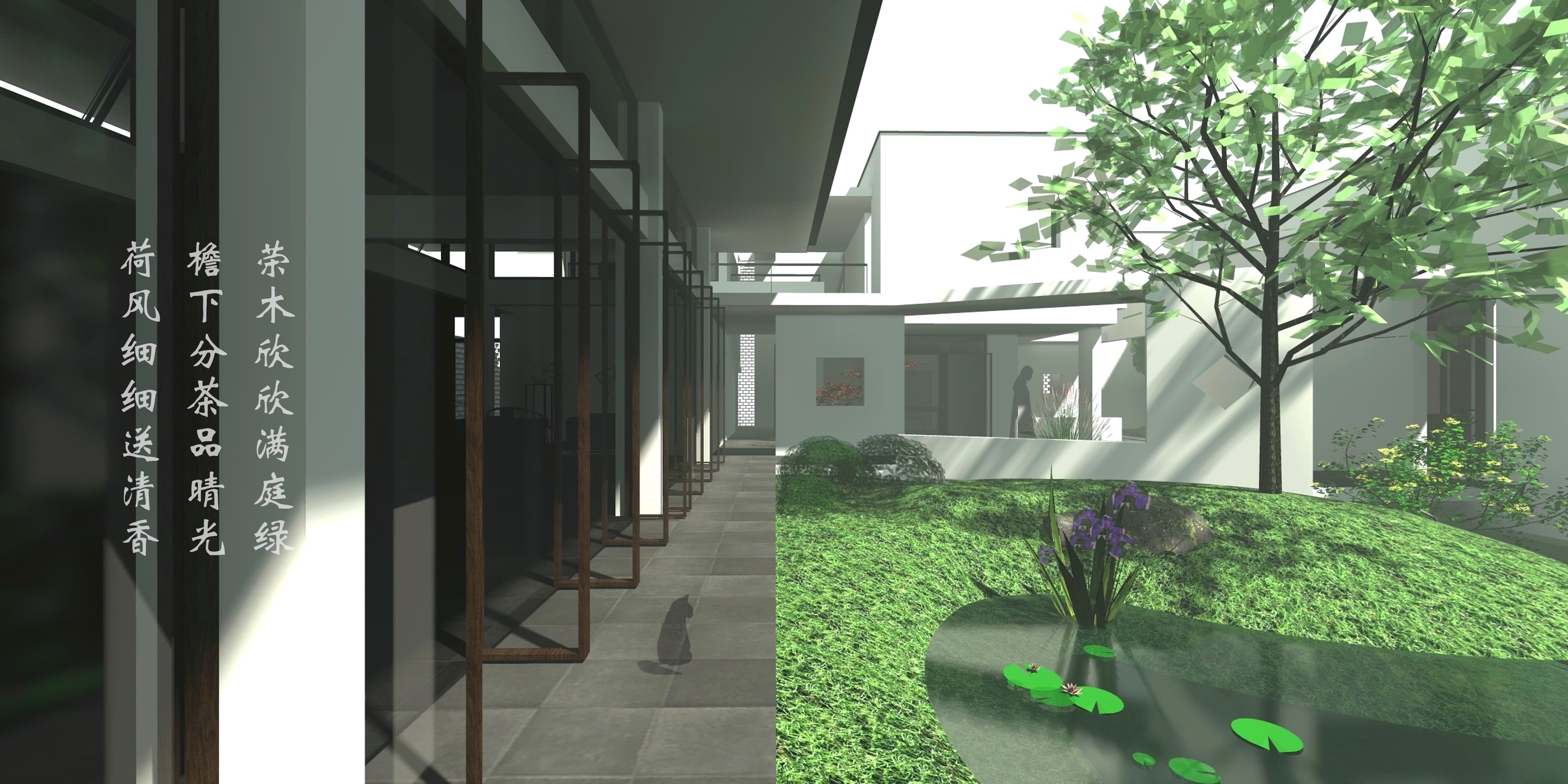
主廳檐廊 Corridor of the salon ?柯笠建筑 Atelier LI
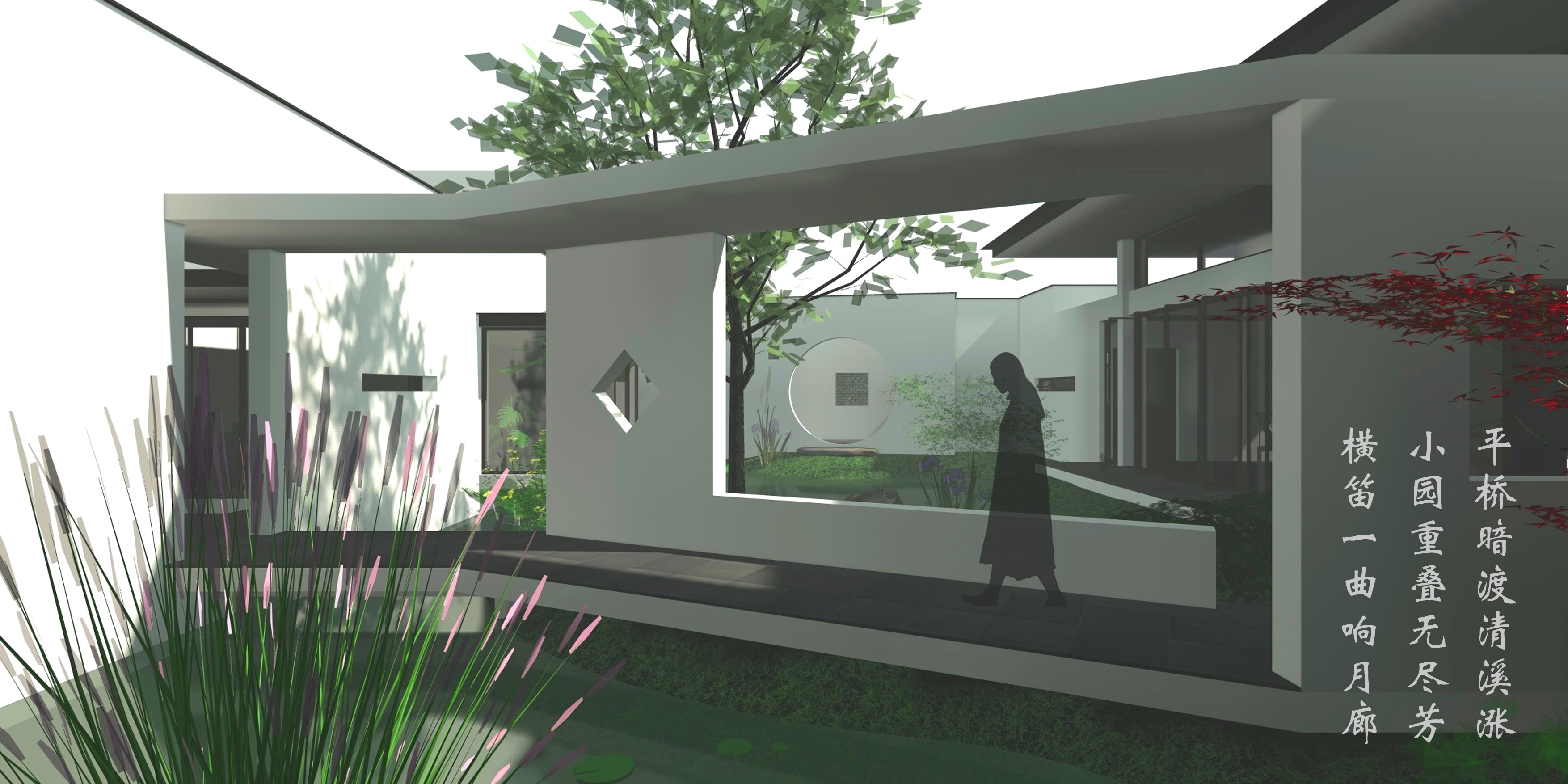
廊橋 Corridor-bridge ?柯笠建筑 Atelier LI

工作間 Atelier ?柯笠建筑 Atelier LI
從整體布局上來(lái)說(shuō),建筑分布在基地的外圍,圍合形成庭園。入口設(shè)置在南面,左側(cè)是菜圃,右側(cè)是車(chē)庫(kù)。推門(mén)進(jìn)入,折線路徑夾在兩道墻之間,讓人想起藝圃的薔薇爬藤。經(jīng)過(guò)一道路徑的轉(zhuǎn)折后,可在圓洞門(mén)前駐足,雖不能進(jìn)入,卻可以先看一眼主園之景。進(jìn)入的路徑仍需要由西側(cè)先進(jìn)室內(nèi),通過(guò)前廳來(lái)到主廳,抵達(dá)庭園。
The site plan shows that buildings are distributed in the periphery,forming gardens in the center. The entrance is located on the south side with a yard for vegetable on the left and a garage on the right. When we enter the door, the path emerges between two walls, bringing the memory of the rosebush of the classic garden Yipu. After turning a corner, we arrive at a moon gate, showing a preview of the landscape of the main garden. For entering the garden, we still need to go indoors on the westside firstly, pass through the entrance hall and then arrive at the main salon.

?柯笠建筑 Atelier LI
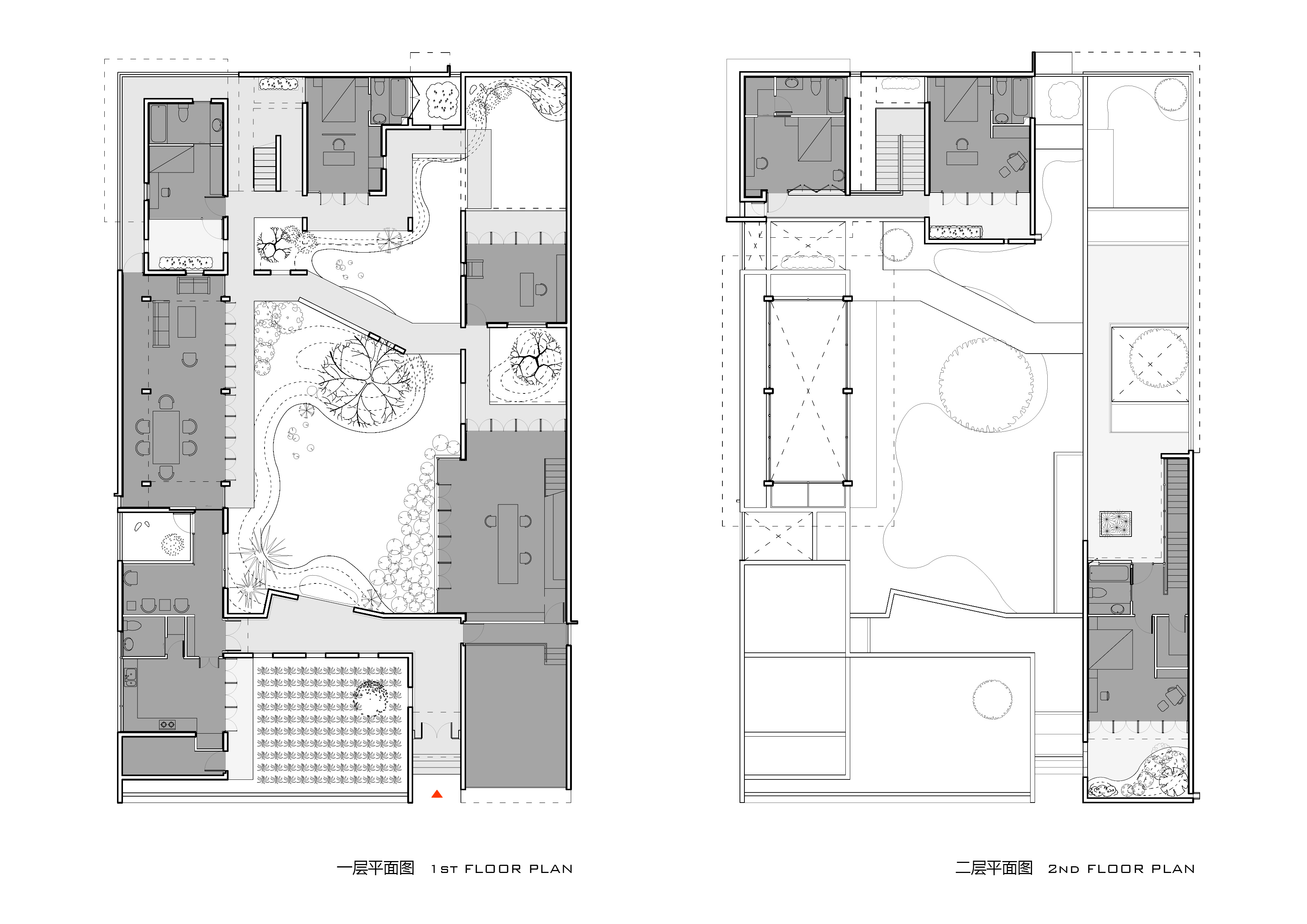
?柯笠建筑 Atelier LI
一道折線形的廊橋穿過(guò)庭園,將其切分為兩部分,南部靠外的主園和北部的內(nèi)園。主園是公共區(qū)域,相對(duì)開(kāi)敞,東西兩側(cè)有工作間和主廳相對(duì);內(nèi)園相對(duì)私密,空間向東北曲折展開(kāi)。庭園的水勢(shì)像留園,從主園南端的圓洞門(mén)起始,經(jīng)廊橋下穿過(guò),向內(nèi)蜿蜒,其盡頭藏于東北端的一處水庭。
A corridor-bridge in the shape of polyline cross over the central space, dividing it into two parts, the main garden in the south and the inner garden in the north. The main garden as the public zone is more open, with the atelier on the east side facing the main salon in the west; the inner garden is more private, spaces expand circuitously to the north-east. The water of the garden is like Liu Garden, starting from the moon gate at the southmost end of the main garden, passing under the corridor-bridge, meandering inwards and finally hiding its end in a courtyard in the northeast of the site.
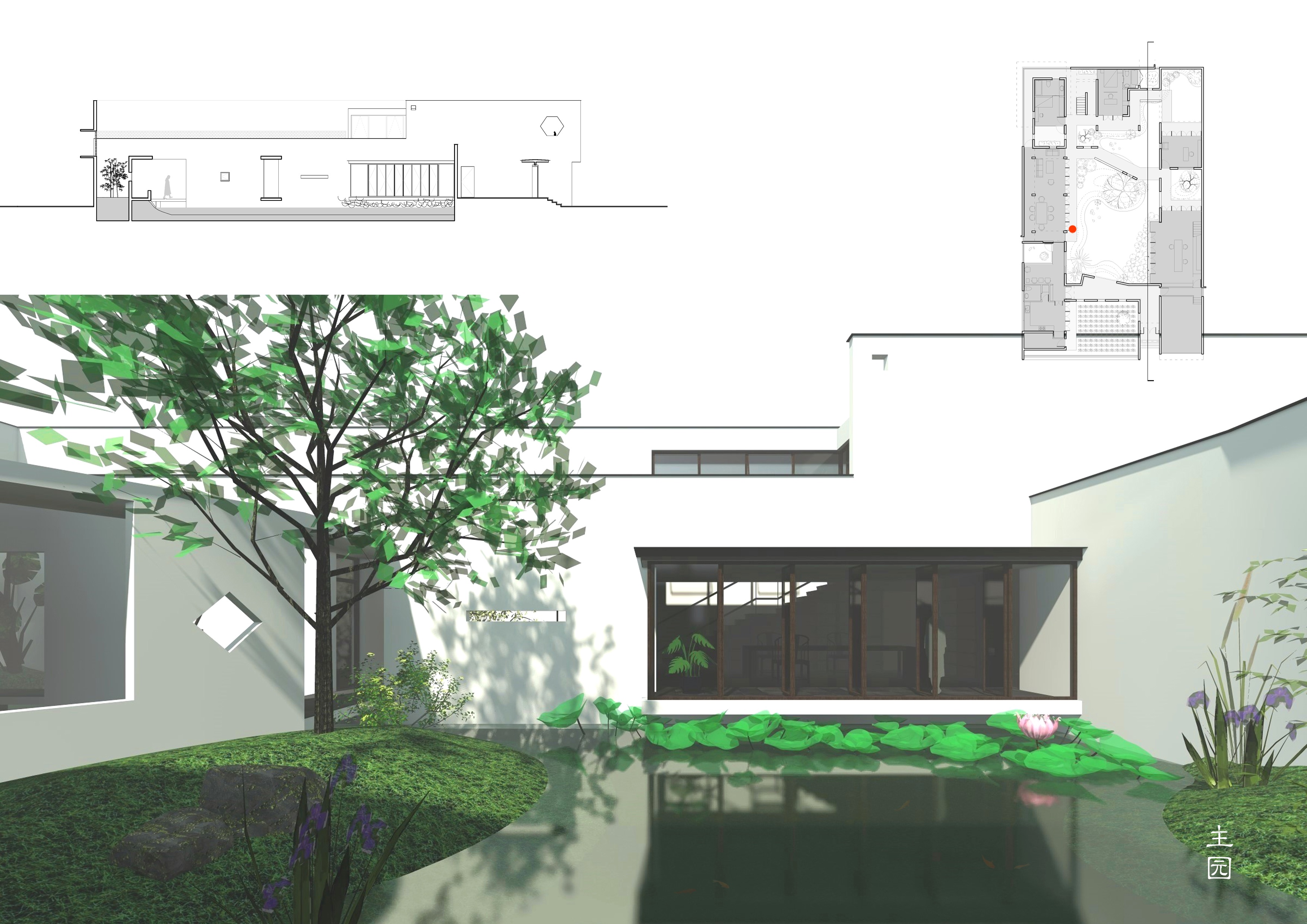 主園,看向工作間 Main garden, viewing the atelier ?柯笠建筑 Atelier LI
主園,看向工作間 Main garden, viewing the atelier ?柯笠建筑 Atelier LI
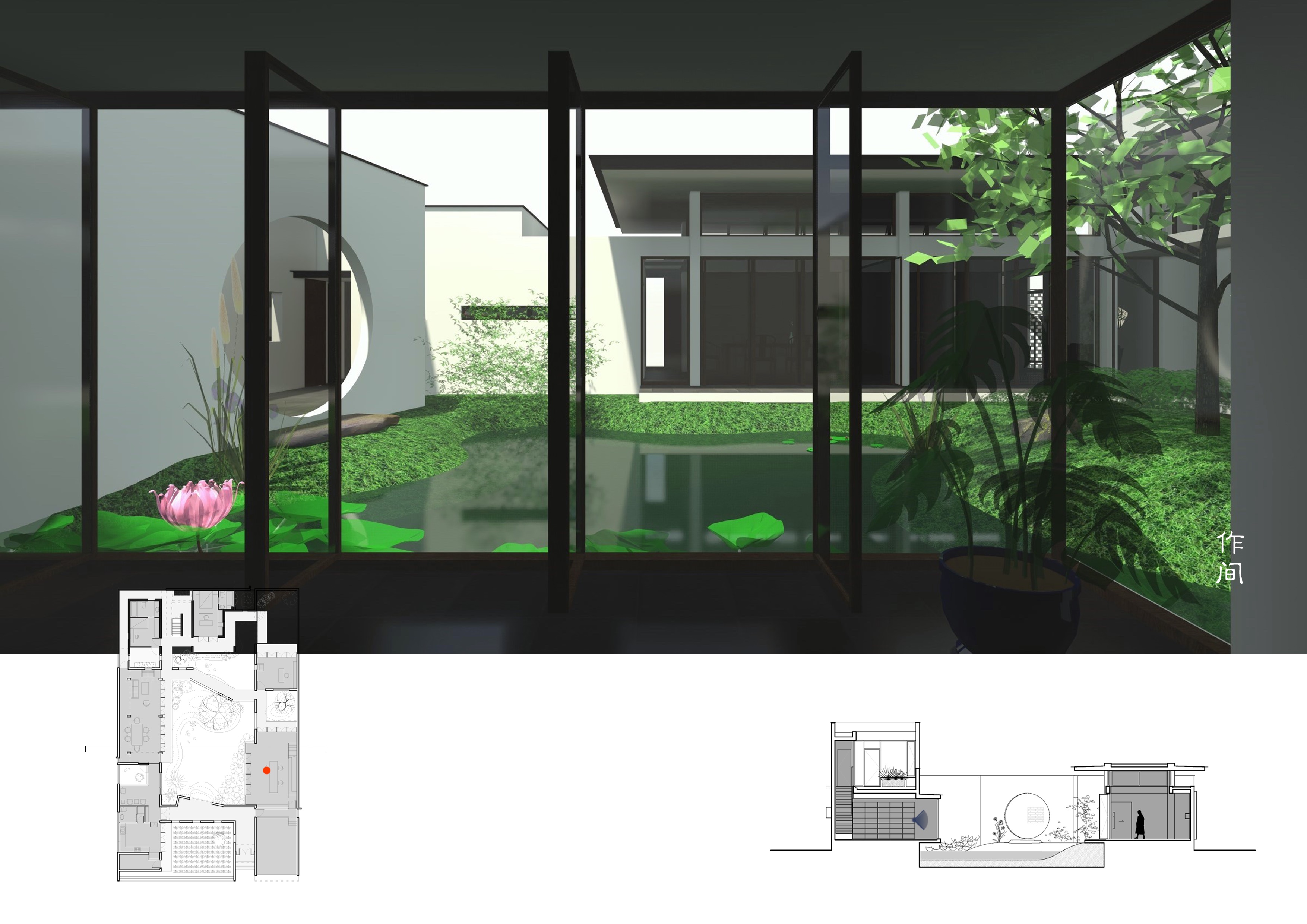
工作間,看向主園 Atelier, viewing the main garden ?柯笠建筑 Atelier LI
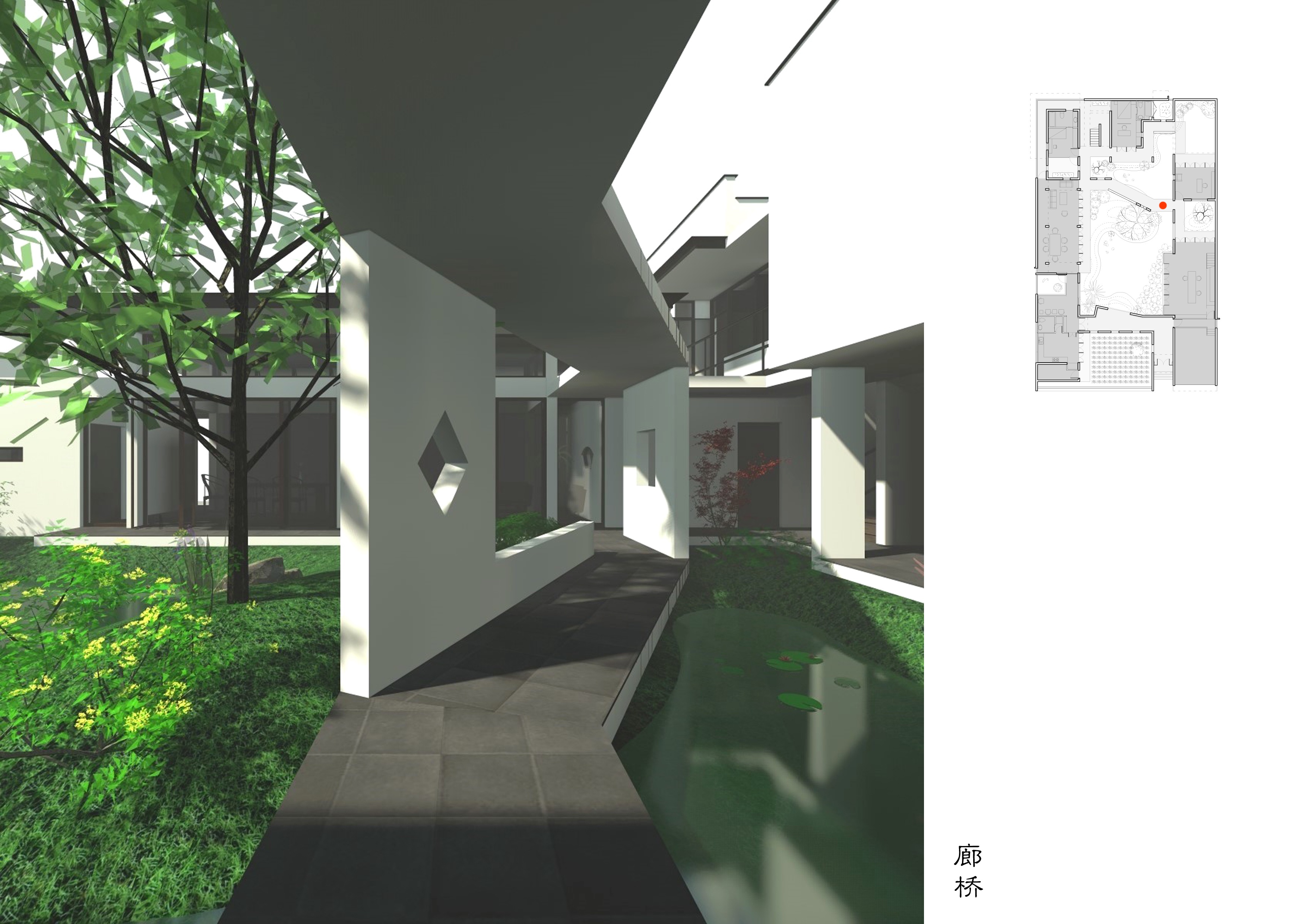
Corridor-bridge ?柯笠建筑 Atelier LI
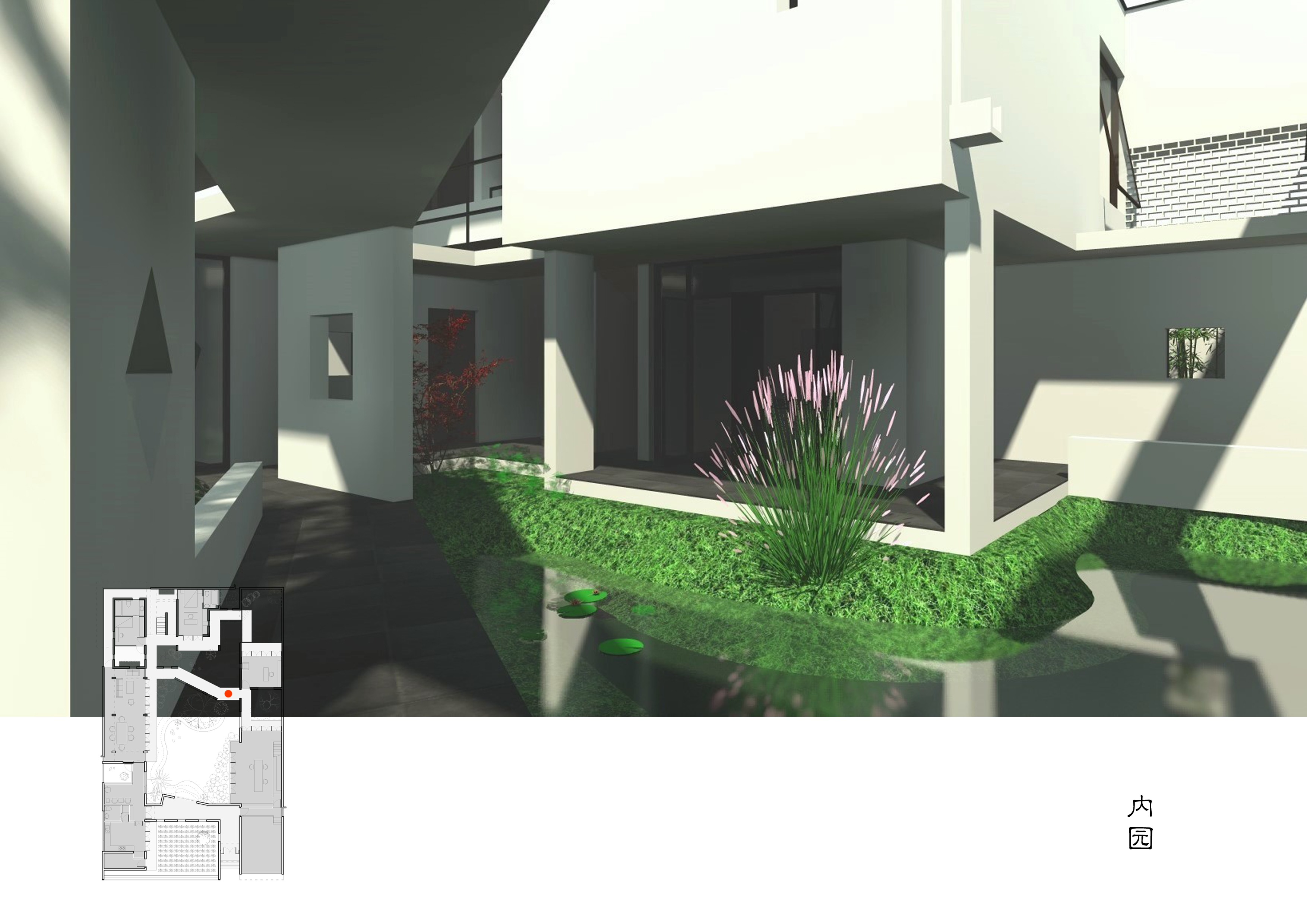
Inner garden ?柯笠建筑 Atelier LI
 Study ?柯笠建筑 Atelier LI
Study ?柯笠建筑 Atelier LI

Water-courtyard ?柯笠建筑 Atelier LI
建筑的檐廊作為曲折的廊道系統(tǒng),形成有趣的游走路徑;一系列的天井內(nèi)院層層疊套,在私密性遞增的同時(shí),室內(nèi)和室外的界限也被進(jìn)一步模糊。在這些天井之間,各個(gè)房間有不同的院景,形成各自的內(nèi)在氛圍。西北和東南的建筑做了局部二層,那些帶天井的臥室和露臺(tái),增加了這個(gè)現(xiàn)代園林的立體之感。
These corridors as the circulation system form interesting paths for promenade; a series of courtyards set one by one, make the limit vague between interior and exterior spaces, meanwhile the privacy increases progressively. Among these courtyards, each room has different view, forming inner atmosphere of its own. The northwestern and southeastern parts of the buildings were designed as two-story volumes. A kind of three-dimensional appeal was add to this modern garden-villa by those terraces and rooms with courtyards on the upper floor.
 East elevation and west elevation ?柯笠建筑 Atelier LI
East elevation and west elevation ?柯笠建筑 Atelier LI
02 四合園墅(方案)
Quadrangle Garden Villa
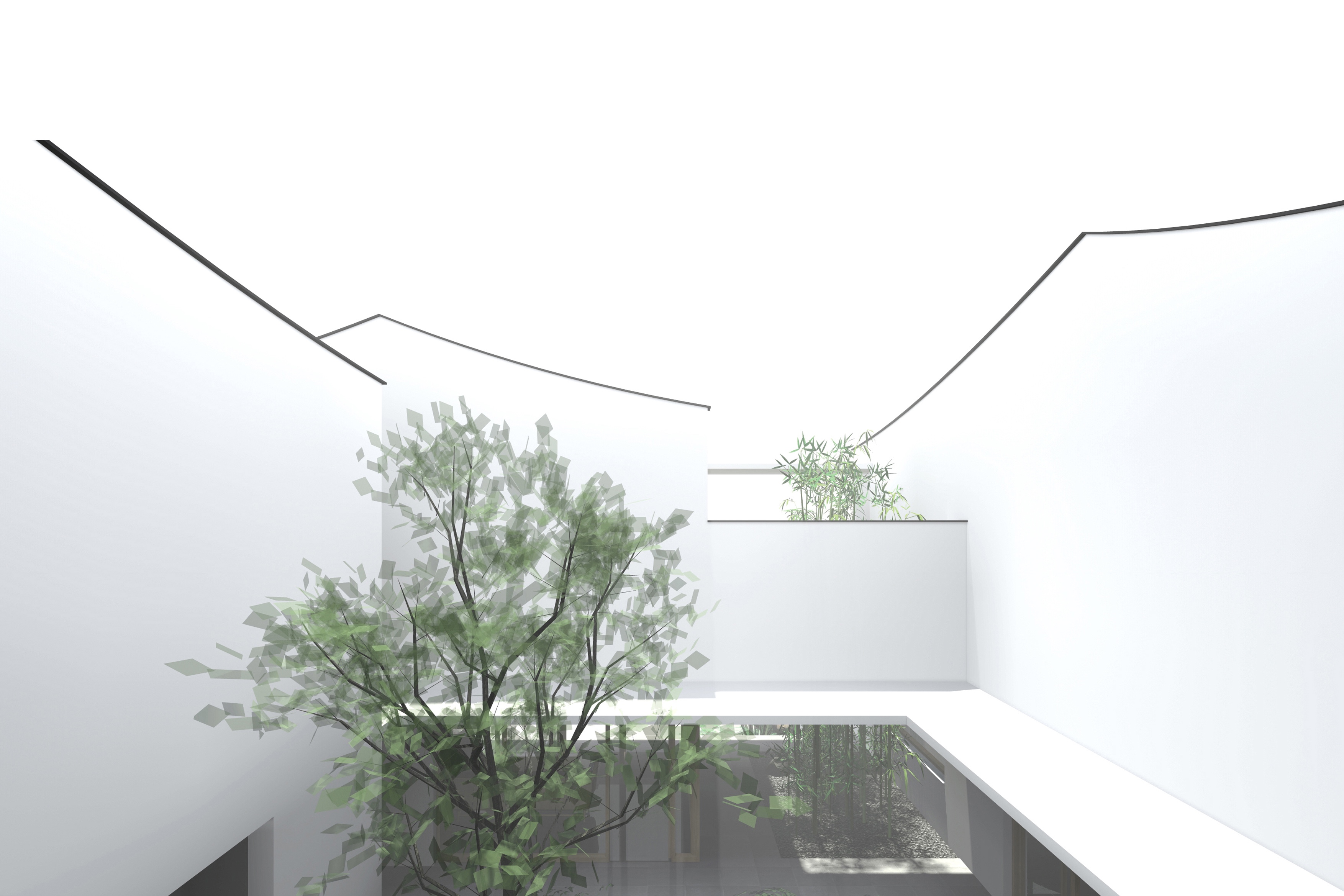
中庭院,三個(gè)白色體量 Central courtyard, three white volumes ?柯笠建筑 Atelier LI
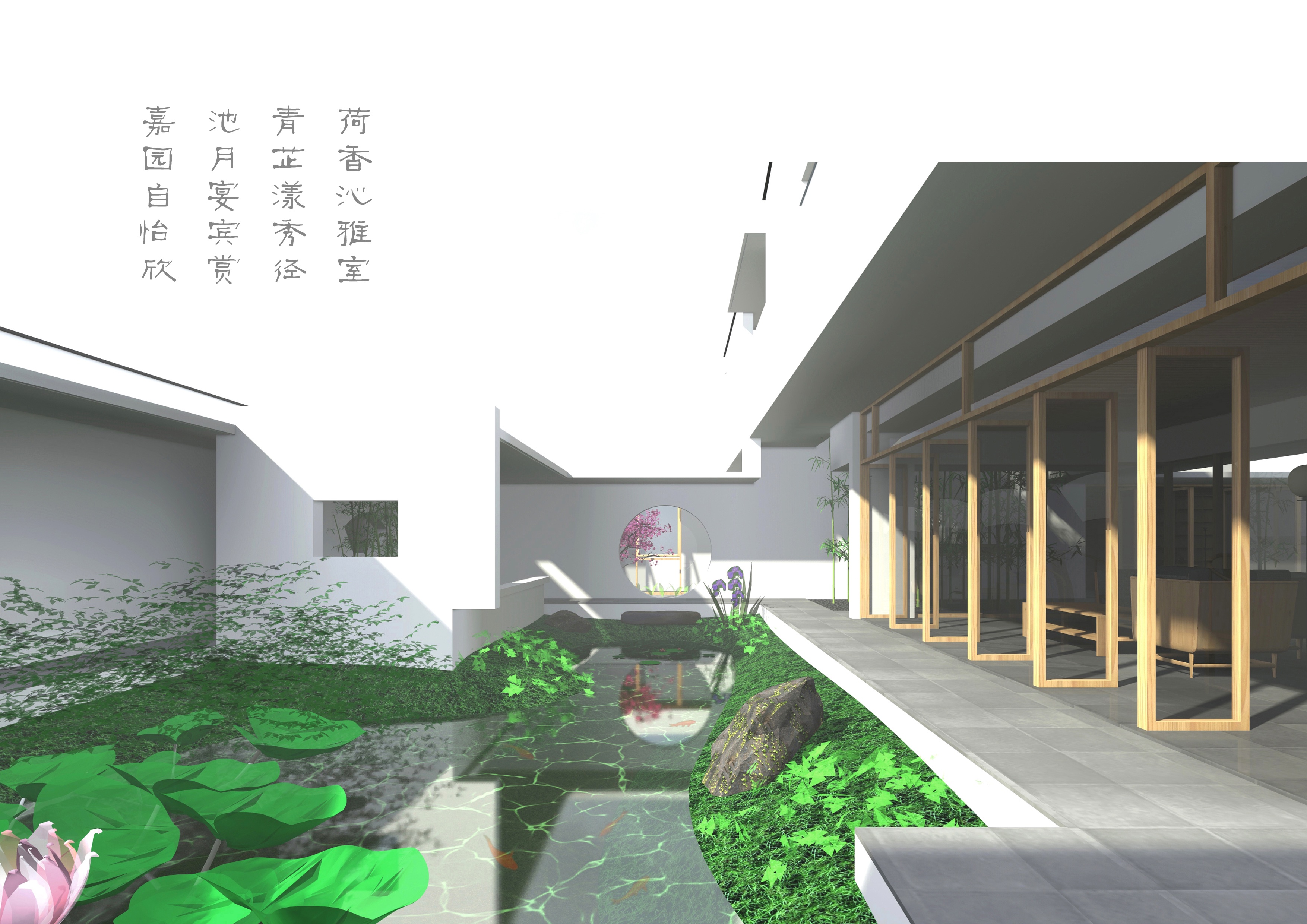
主庭園 Main garden ?柯笠建筑 Atelier LI
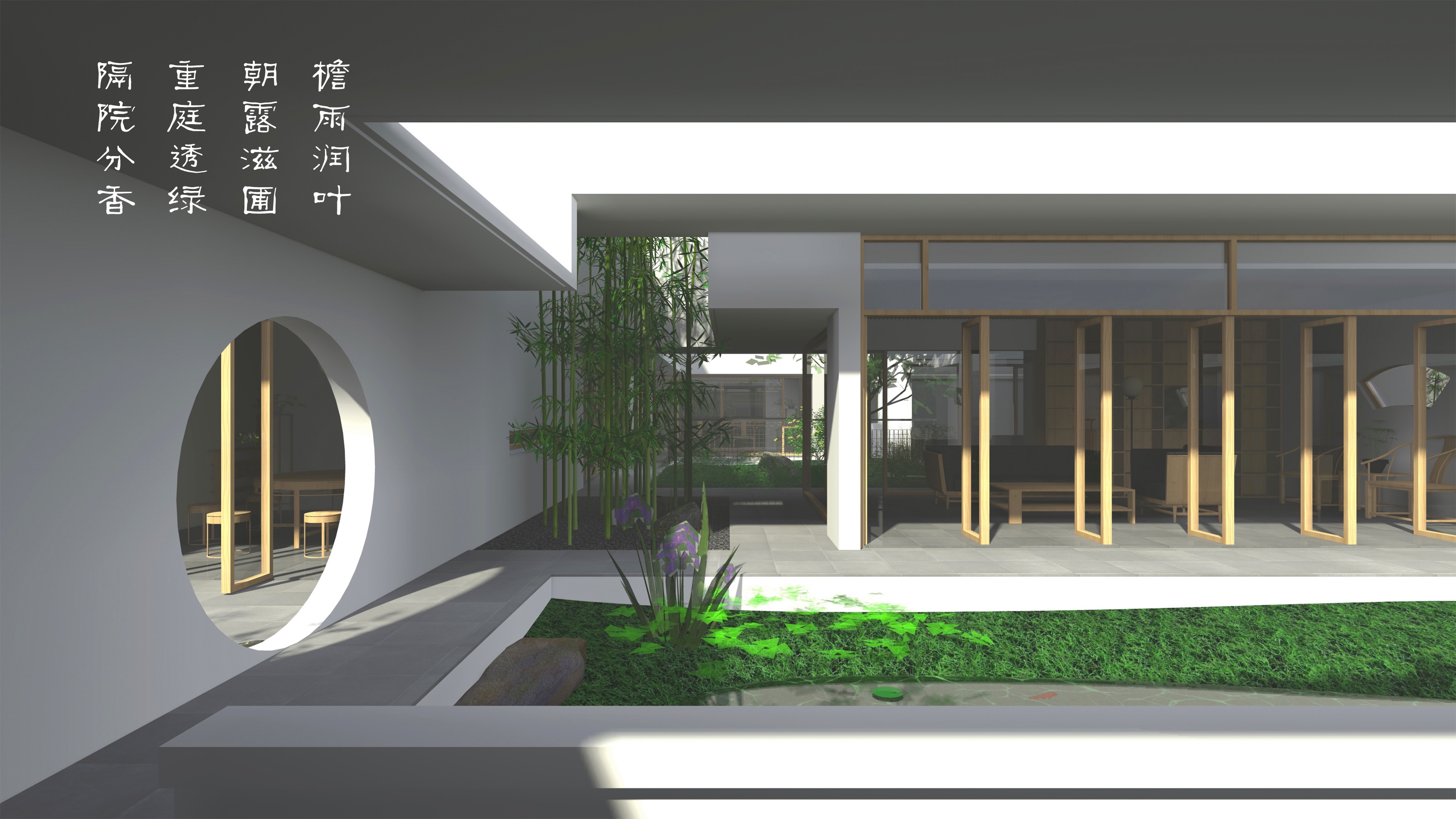 主庭園, 由水榭看向中庭院 Main garden,viewing central courtyard from water-pavilion ?柯笠建筑 Atelier LI
主庭園, 由水榭看向中庭院 Main garden,viewing central courtyard from water-pavilion ?柯笠建筑 Atelier LI
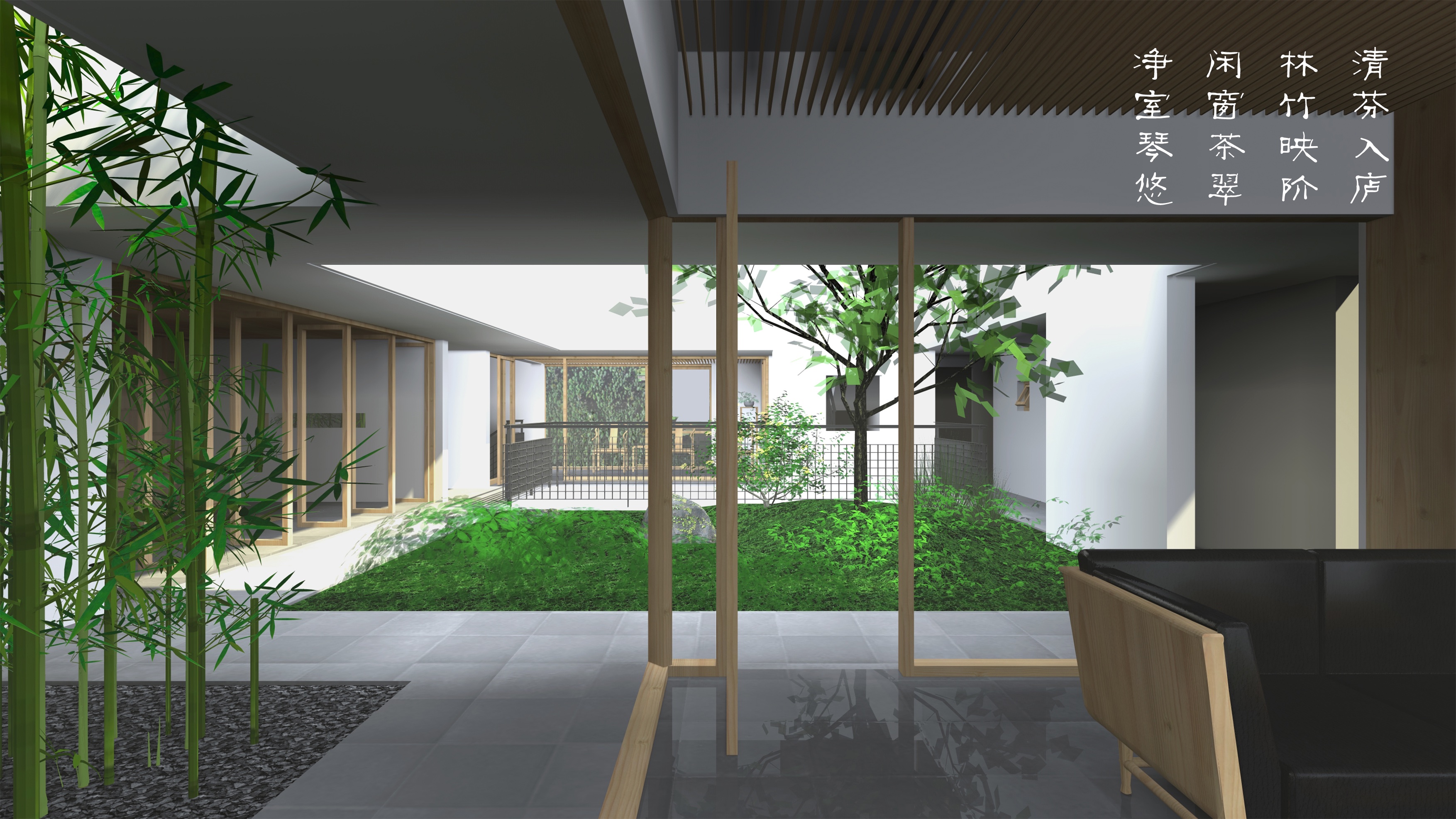 由主廳看向中庭院 viewing central courtyard from main salon ?柯笠建筑 Atelier LI
由主廳看向中庭院 viewing central courtyard from main salon ?柯笠建筑 Atelier LI
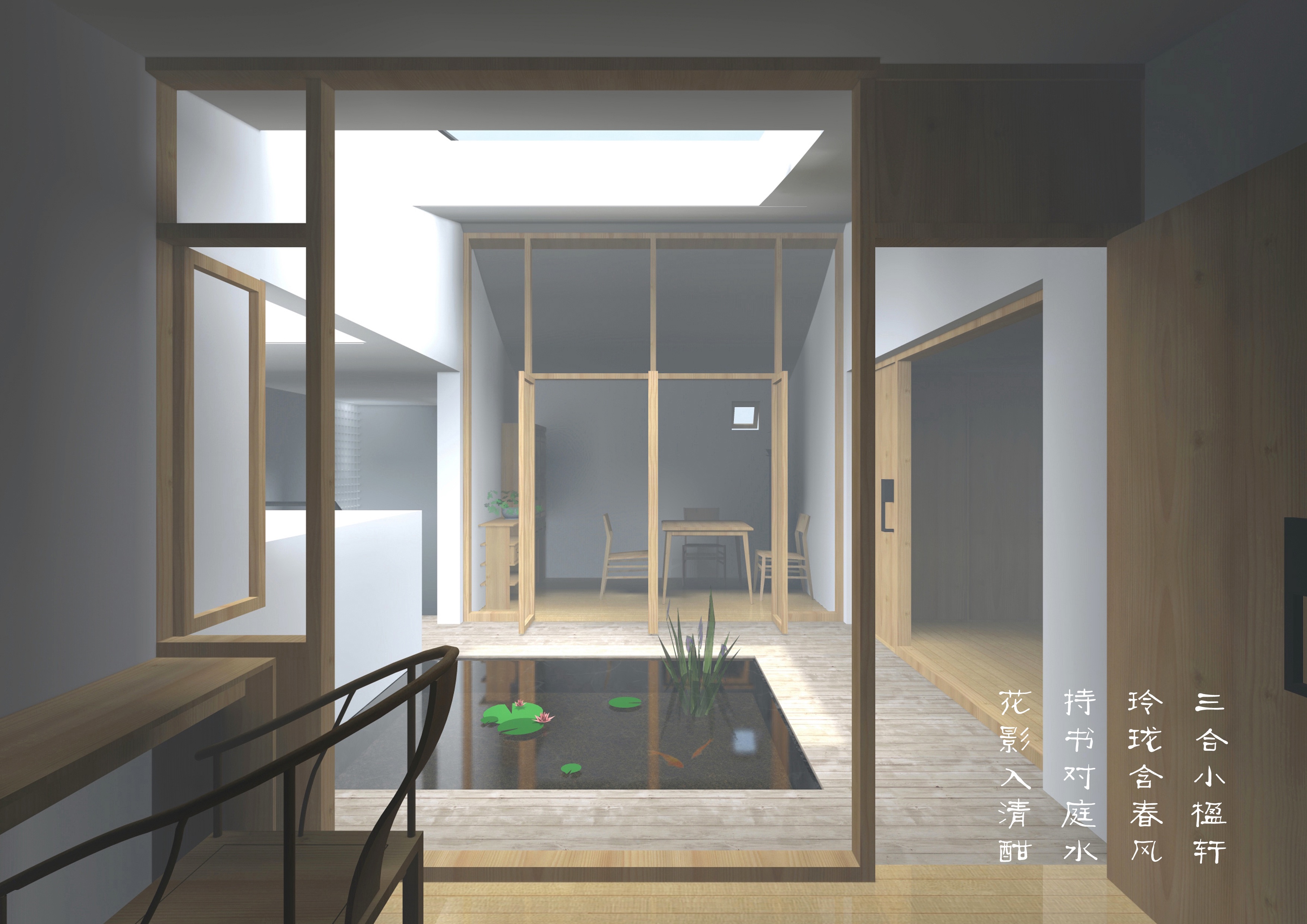
二層三合小院,由兩間臥室一間書(shū)房圍合 2nd floor courtyard, surrounded by 2 bedrooms and 1 study ?柯笠建筑 Atelier LI
這個(gè)項(xiàng)目的基地位于蘇州南郊的一個(gè)別墅區(qū),業(yè)主希望將原有的獨(dú)棟別墅拆除,重建一棟現(xiàn)代的園墅。大多數(shù)獨(dú)棟別墅區(qū)從平面上看會(huì)得到院墻圍成一圈而房子在中間的圖底關(guān)系,因此形成房子只是室內(nèi)而院子只是空地的單調(diào)場(chǎng)所,沒(méi)有任何室內(nèi)外的空間滲透。
The site of this project is located in a villa district in the southern suburbs of Suzhou. The client wanted to demolish the old house and to build a modern garden-villa. Most villa districts show a figure-ground relation, a house set in the center with bounding walls surrounded, so that a boring area is formed. The house is only a volume containing its interior and the yard is just a piece of open land without any spatial permeation between interior and exterior.
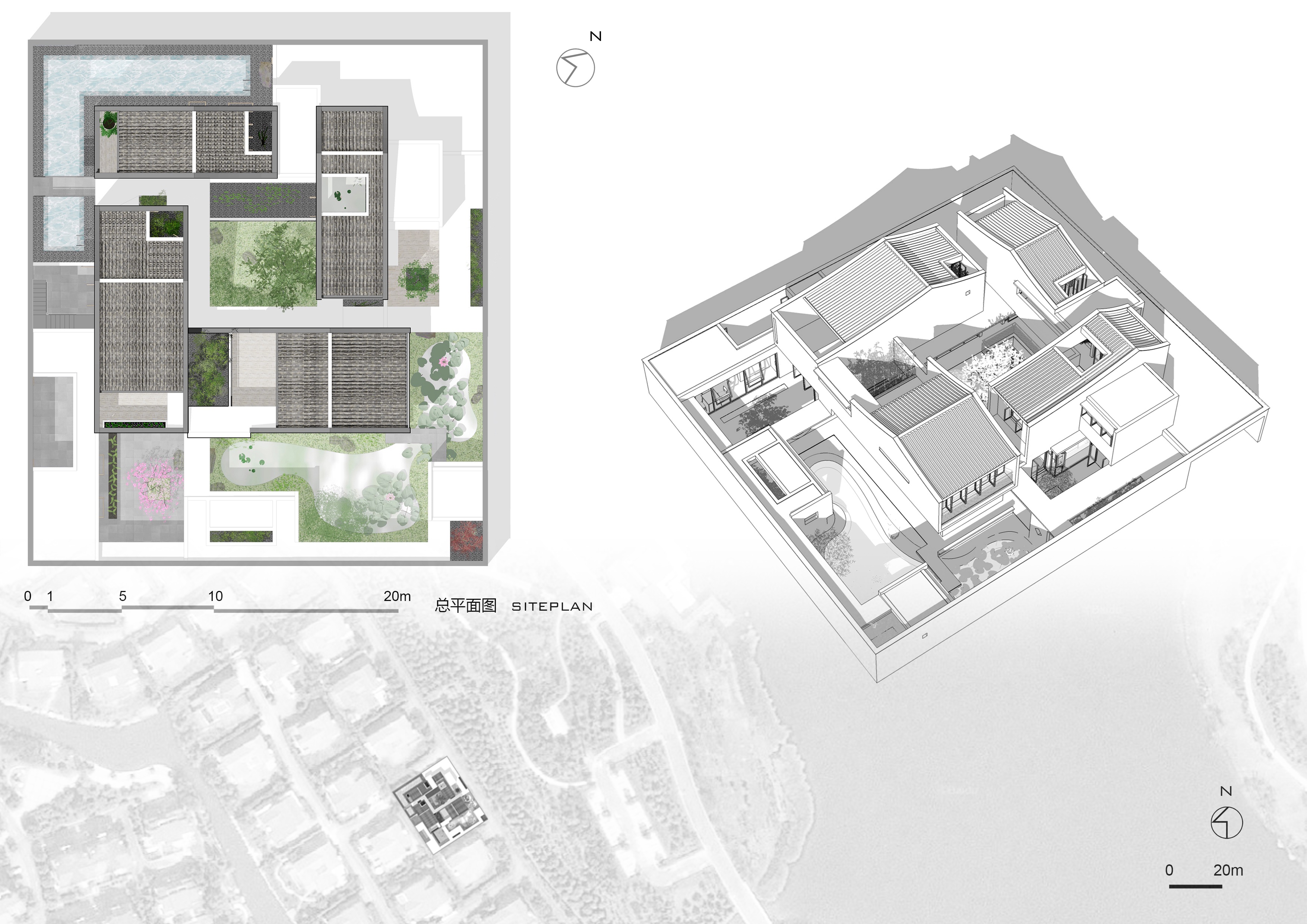
?柯笠建筑 Atelier LI
 ?柯笠建筑 Atelier LI
?柯笠建筑 Atelier LI
我們的設(shè)計(jì)策略首先是將建筑拆分為4個(gè)二層的體量,圍合出一個(gè)中庭院;其次,沿著東南的院墻設(shè)置邊廊,必要的節(jié)點(diǎn)位置設(shè)置亭和榭,由此在建筑主體和邊廊之間形成東南主庭園。人們從東北的入口進(jìn)入園墅,沿著廊經(jīng)過(guò)東南的主園游走進(jìn)入中庭院,或先向西拐入中庭院后游東南的主園,由此內(nèi)外的空間產(chǎn)生了有趣的游走互動(dòng)體驗(yàn)以及豐富的層次感。南面透明的一樓主廳更增加了內(nèi)外空間在視覺(jué)上的相互滲透。
Our design strategies are firstly to split the whole into four two-story volumes, forming a central courtyard; then corridors are set alone bounding walls and pavilions are placed at joint points when needed, so that a main garden is formed in the southeast of the site, between the main building and the corridors. People enter the villa by the entrance in the northeast, going along the corridors, passing through the main garden, arriving at the central courtyard, or turn to the west firstly, getting into the central courtyard and then visiting the main garden in the southeast. The inner and outer space provide an interesting promenade experience and a strong layering feeling. The transparent fa?ade of the main salon in the southern volume intensify visually the permeation between inner and outer spaces.
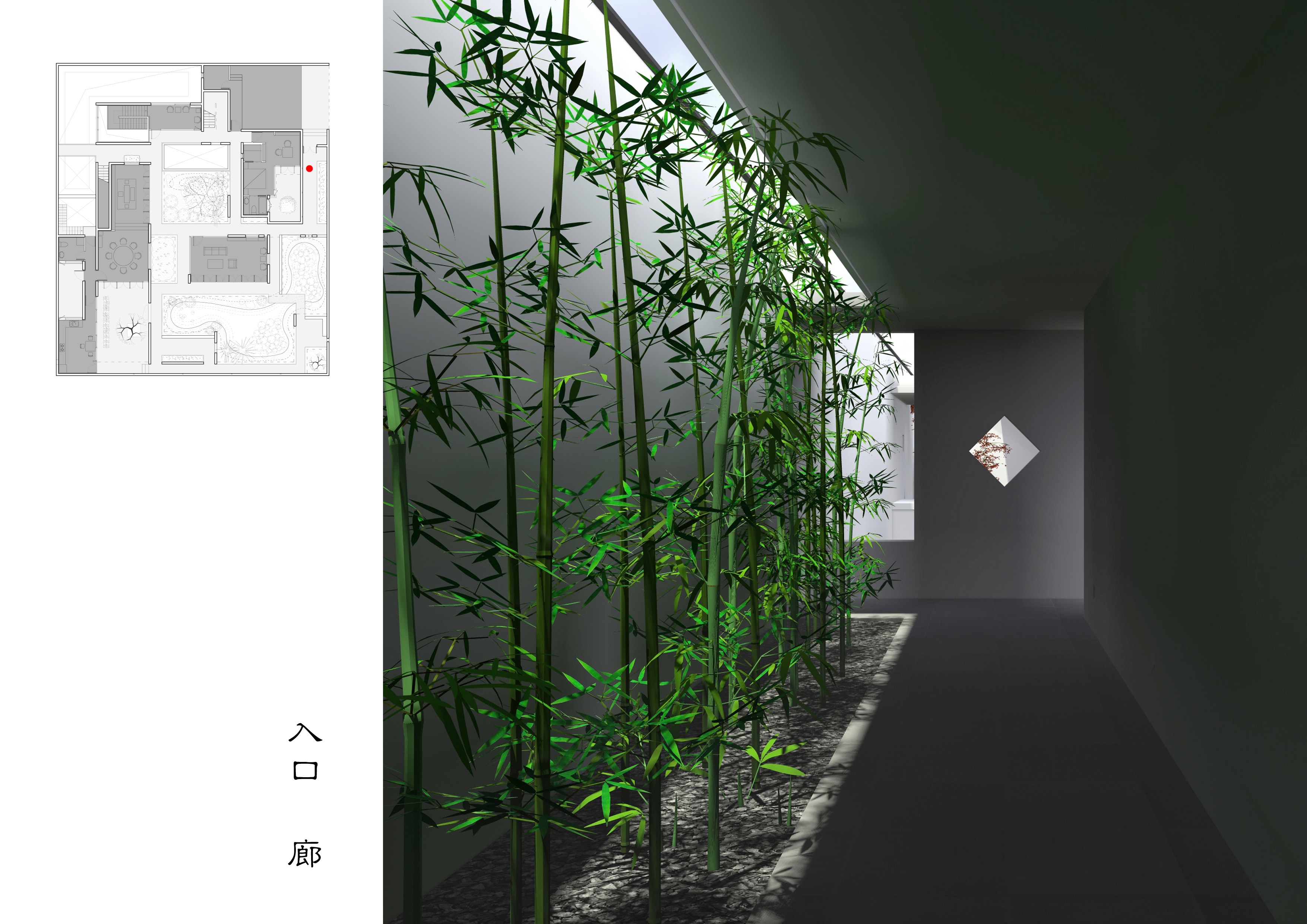
Entrance corridor ?柯笠建筑 Atelier LI
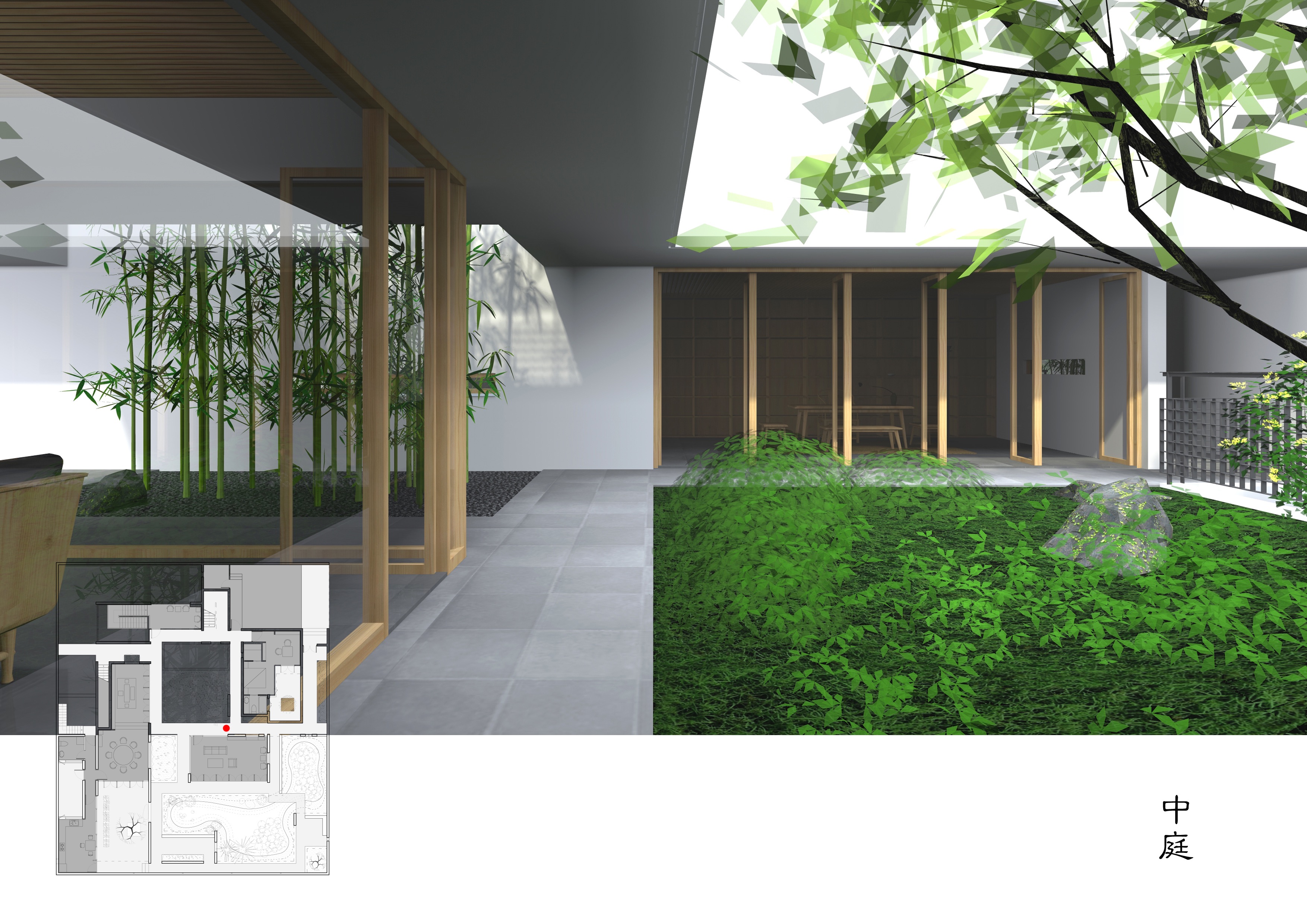 Central courtyard ?柯笠建筑 Atelier LI
Central courtyard ?柯笠建筑 Atelier LI
另一個(gè)重要的議題是,如何利用別墅建筑地上兩層、地下一層的樓層布局形成立體的園林。我們?cè)诙釉O(shè)置了一系列的天井、內(nèi)院和露臺(tái),讓人不覺(jué)得置身于樓上;在地下室設(shè)置下沉庭園和L型泳池,以及局部的地下通高空間,讓人不覺(jué)身在地下。通過(guò)這樣的設(shè)計(jì)手法,整個(gè)建筑的樓層概念被模糊化,在有限的空間中仿佛有了無(wú)限的體驗(yàn)。
Another important issue is to utilize the vertical layout of the villa building, two floors with a basement, to form a three-dimensional garden. A series of courtyards and terraces are placed on the 2nd floor, which make people forget the floor; A “L” shaped swimming pool, a sunken courtyard and duplex space are set, which make people forget that they are on the basement floor. In this way the conception of “Floor” is fuzzified, there seems to be infinite spatial experiences in this limited building.
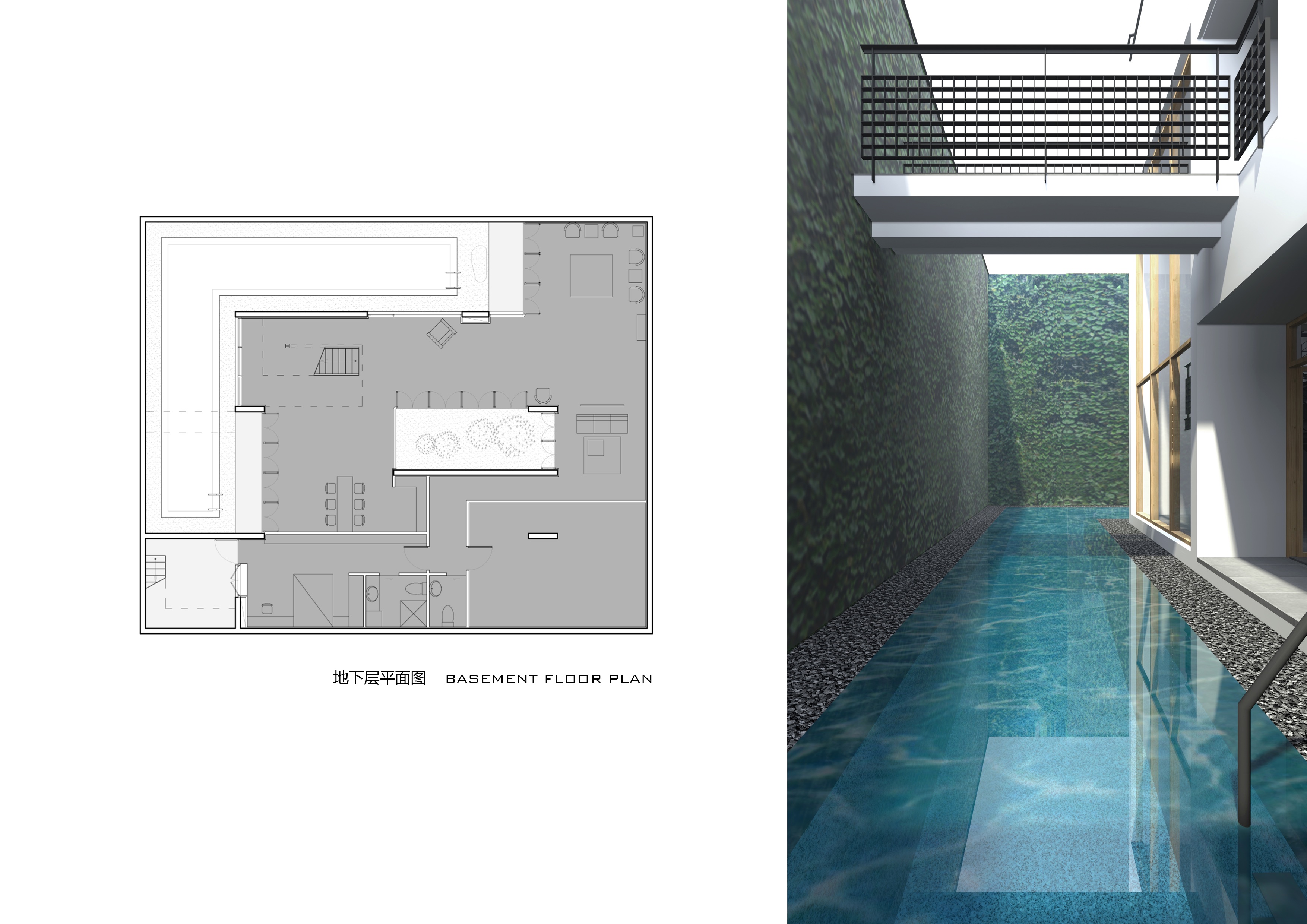 位于地下層的L型泳池 “L” shaped swimming pool on the basement floor ?柯笠建筑 Atelier LI
位于地下層的L型泳池 “L” shaped swimming pool on the basement floor ?柯笠建筑 Atelier LI
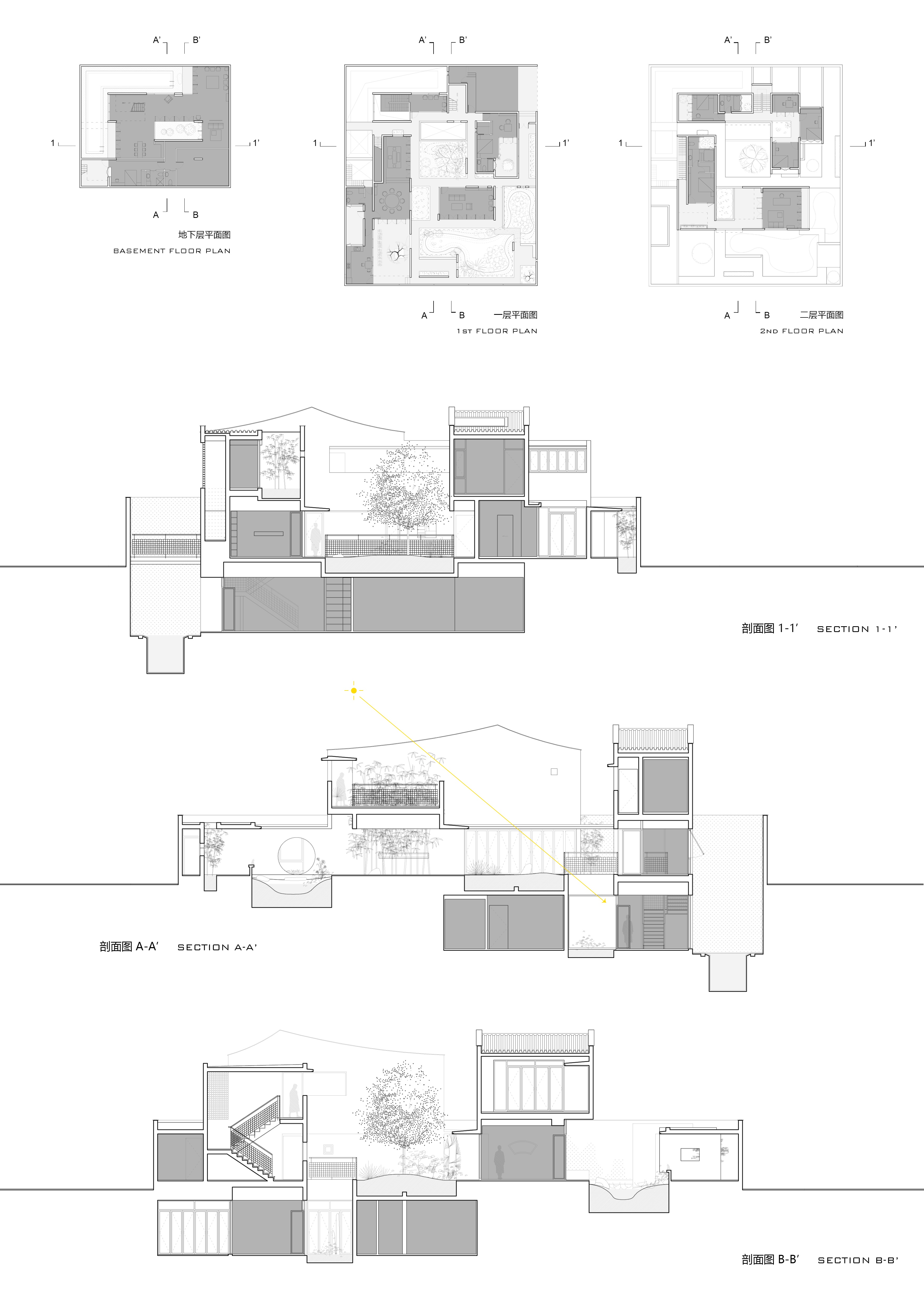
?柯笠建筑 Atelier LI
03 SK Villa
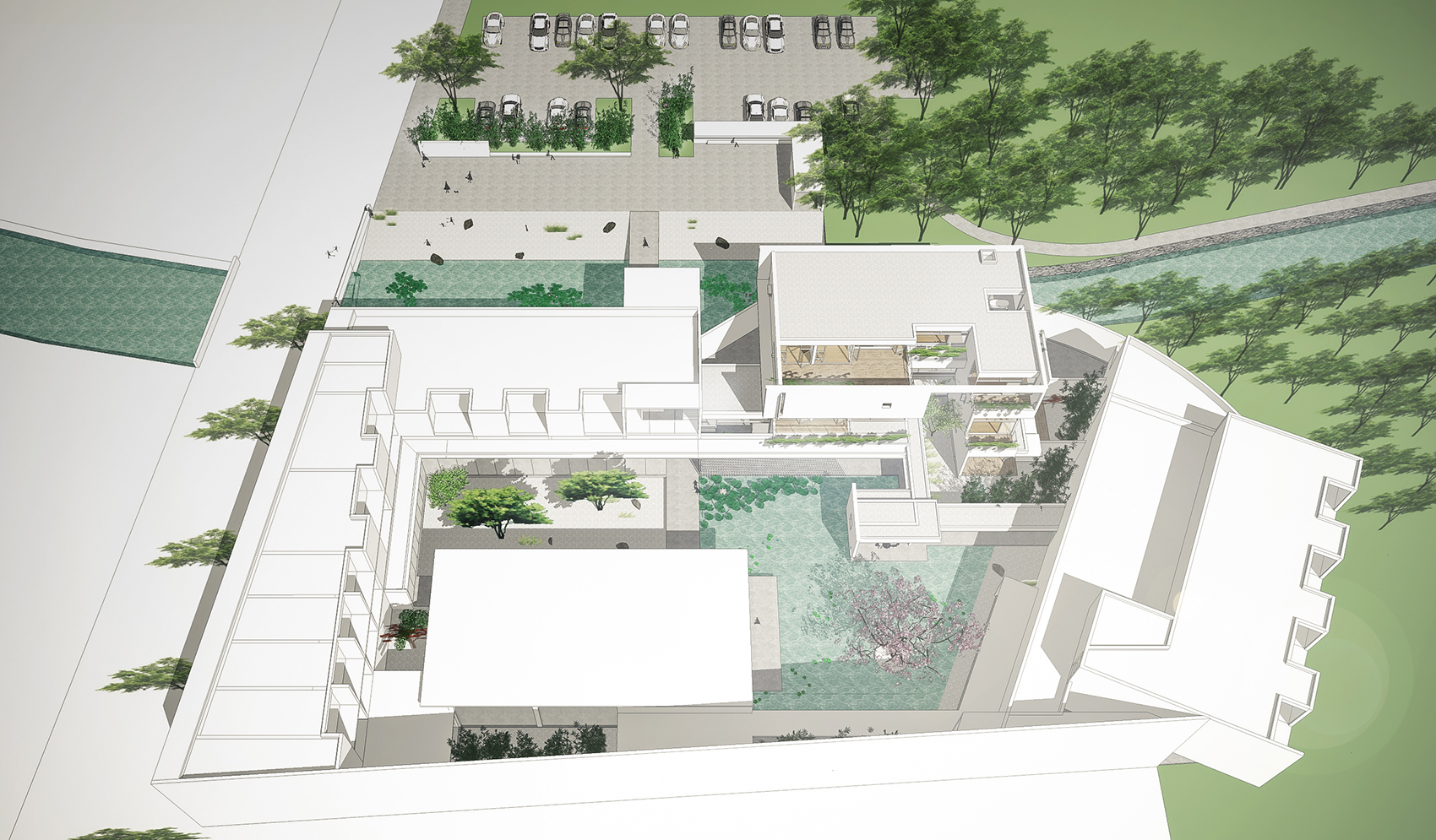
水庭園 Water garden ?柯笠建筑 Atelier LI
2019年秋天,我們受業(yè)主委托,對(duì)湖州的一個(gè)占地6畝的老舊廠房倉(cāng)儲(chǔ)區(qū)進(jìn)行重新設(shè)計(jì)。業(yè)主希望建一個(gè)一畝園或者四合園墅的放大版現(xiàn)代園林,設(shè)置約20間客房和一棟別墅,在作為民宿酒店對(duì)外經(jīng)營(yíng)的同時(shí)也可度假時(shí)自住。項(xiàng)目的總建筑面積約4000m2,業(yè)主和我們商定,在其中盡可能多地設(shè)置公共空間,成為當(dāng)?shù)氐囊粋€(gè)文旅綜合體,可以接待一部分的非住宿客人。
The autumn of 2019, we were commissioned by the client to redesign an old industrial site of 4000m2, containing some abandoned workshop buildings and warehouses. Our client hoped to build a modern garden-villa that is the enlarged version of One Mu Garden or Quadrangle Garden Villa. The new building would be used as a hotel (about 20 rooms) and meanwhile a vacation villa was planned for the client’s family. The total building area is 4000m2. We decided with the client to set up more public spaces so that the project would be a local cultural and touristic complex, which could receive a number of customers not staying.

北立面 North elevation ?柯笠建筑 Atelier LI
基地北面倚河,西面是城鎮(zhèn)道路,東面是一片果林田園,南面有其他廠區(qū)需用高墻隔開(kāi)。主入口在北面,通過(guò)一座平橋跨過(guò)小河,有如滄浪亭。入口西側(cè)的線形玻璃體量懸挑于水上,輕盈通透,人們坐在其中喝茶觀景,園內(nèi)與小河的景觀互相滲透。西面臨街是售賣(mài)文創(chuàng)產(chǎn)品的展示空間。
The site is surrounded by a river in the north, a town road in the west and an orchard-field in the east. Another industrial site in the south needs to be separated by high wall. The main entrance is situated in the north side, a bridge crossing the river, which is similar to Canglang Pavilion Garden. A linear glass volume on the west side of the entrance is overhung above the river, which is light and transparent. People siting and drinking tea therein, watch the landscape that permeates mutually between the garden and the river. Retail and displaying spaces are placed by street-side in the west.

鳥(niǎo)瞰 Aerial view ?柯笠建筑 Atelier LI
園內(nèi)分為東西兩部分,西側(cè)是砂石園,東面是水庭園。砂石園被茶室、展示空間,和南面可以舉辦小型宴會(huì)的餐廳圍合,它們共同形成相對(duì)規(guī)整的玻璃界面,共享砂石庭院景觀。位于二層和三層的客房退居其后,保留一定的私密距離。
The whole garden is divided into two parts, the east side is the water garden, and the west side is a courtyard of gravel. This courtyard is surrounded by the tearoom, the displaying space and the canteen, which is able to hold a party, forming a neat glass fa?ade and sharing the view of the courtyard. Guestrooms on the second and the third floor retreat a little to keep a certain distance for privacy.
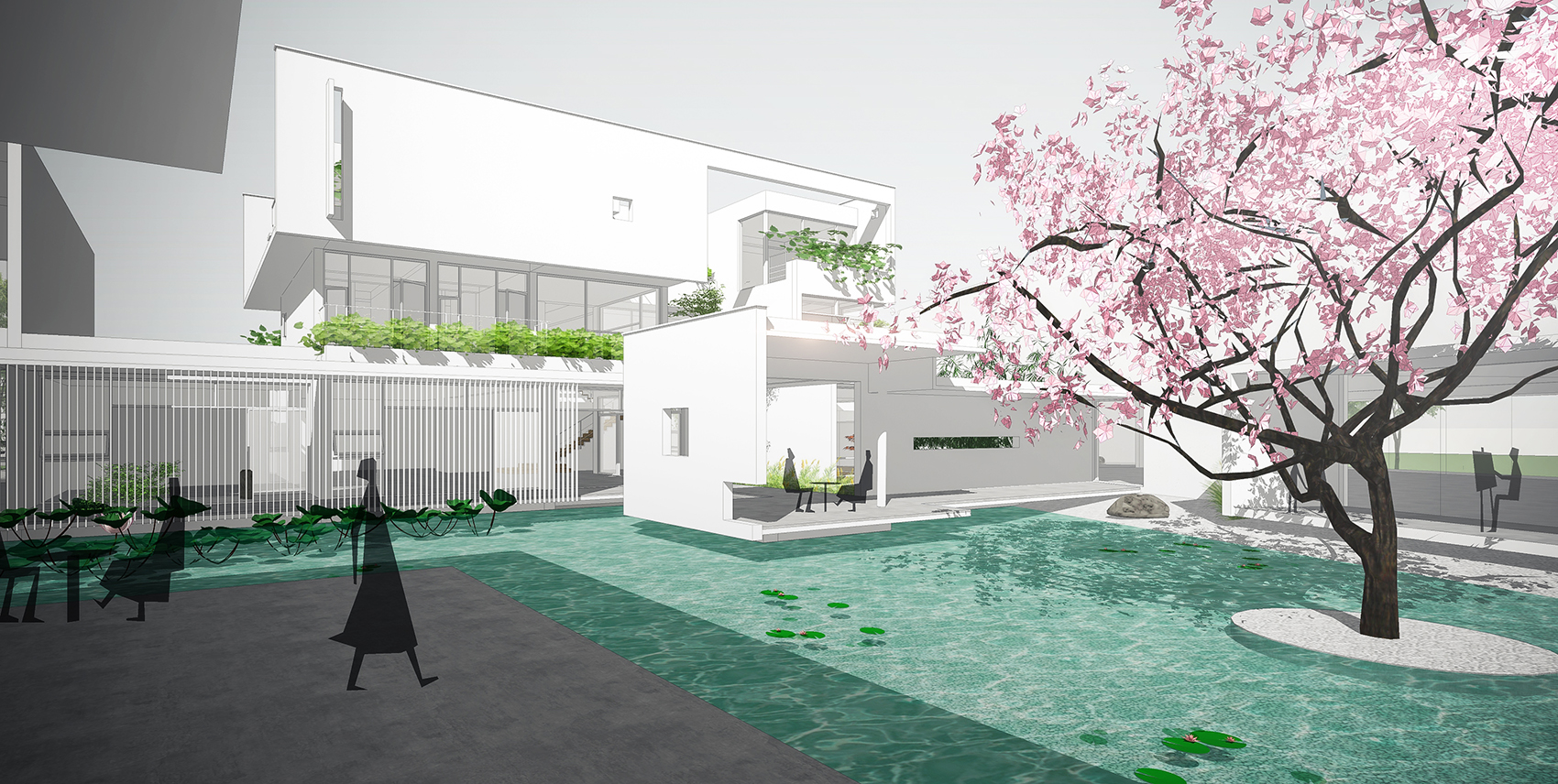 水庭園,看向別墅 Water garden, viewing the villa building ?柯笠建筑 Atelier LI
水庭園,看向別墅 Water garden, viewing the villa building ?柯笠建筑 Atelier LI
水庭園的圍合界面豐富而多變,好似網(wǎng)師園,圍繞水庭的步道檐廊,提供了游走、休憩和觀望的游園體驗(yàn)。水庭中兩道檐廊的交匯處形成一個(gè)亭子,微微漂在水上,北面的別墅被它掩在后面。東面體量的一層是小型藝術(shù)館,也可用作手作工坊,玻璃的立面將東邊田園和果林的景色借入,使整個(gè)庭園獲得視覺(jué)縱深。藝術(shù)館的二層和三層共設(shè)置8間客房,朝向東面的自然景色。
The border of the water garden is irregular providing full and varied surrounding fa?ades, like Master of the Nets Garden. Walkways and corridors around water give experiences of promenade, repose and viewing. A pavilion is formed at the joint point of two corridors, floating lightly above the water, hiding the villa building in the north behind its back. The first floor of the east volume is a little art gallery, also used as an handcraft atelier, whose glass fa?ade brings in the landscape of the orchard-field on the east of the site, gaining visual depth for the whole garden. Eight guestrooms are set on the second and third floor, viewing east.
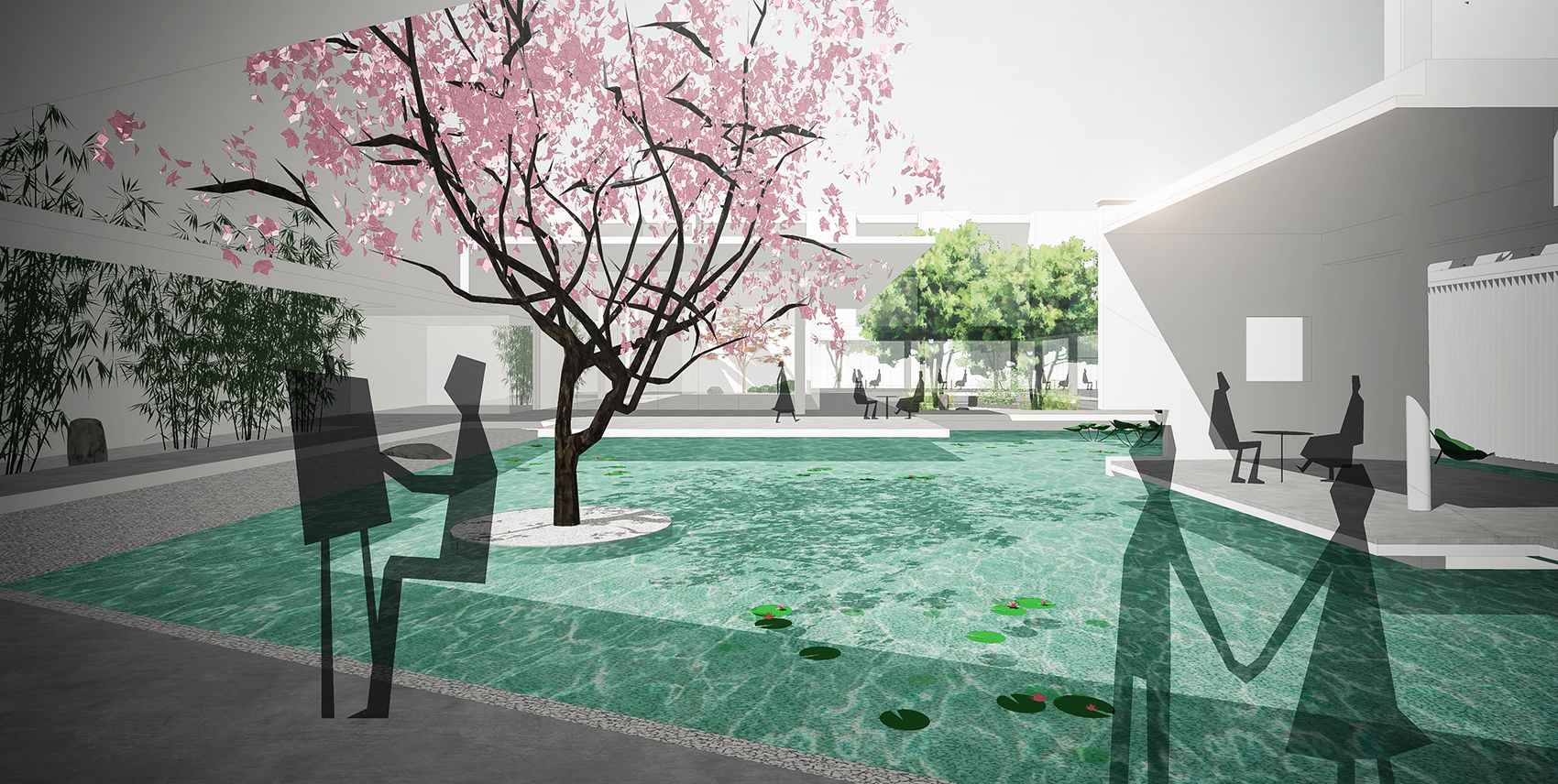
由藝術(shù)館看水庭園 Viewing water garden from the art gallery ?柯笠建筑 Atelier LI
04 上海熊貓集團(tuán)辦公空樓改造設(shè)計(jì)(建造中)
Transformation of Sourper & Panda – Groupe Office Building(under construction)
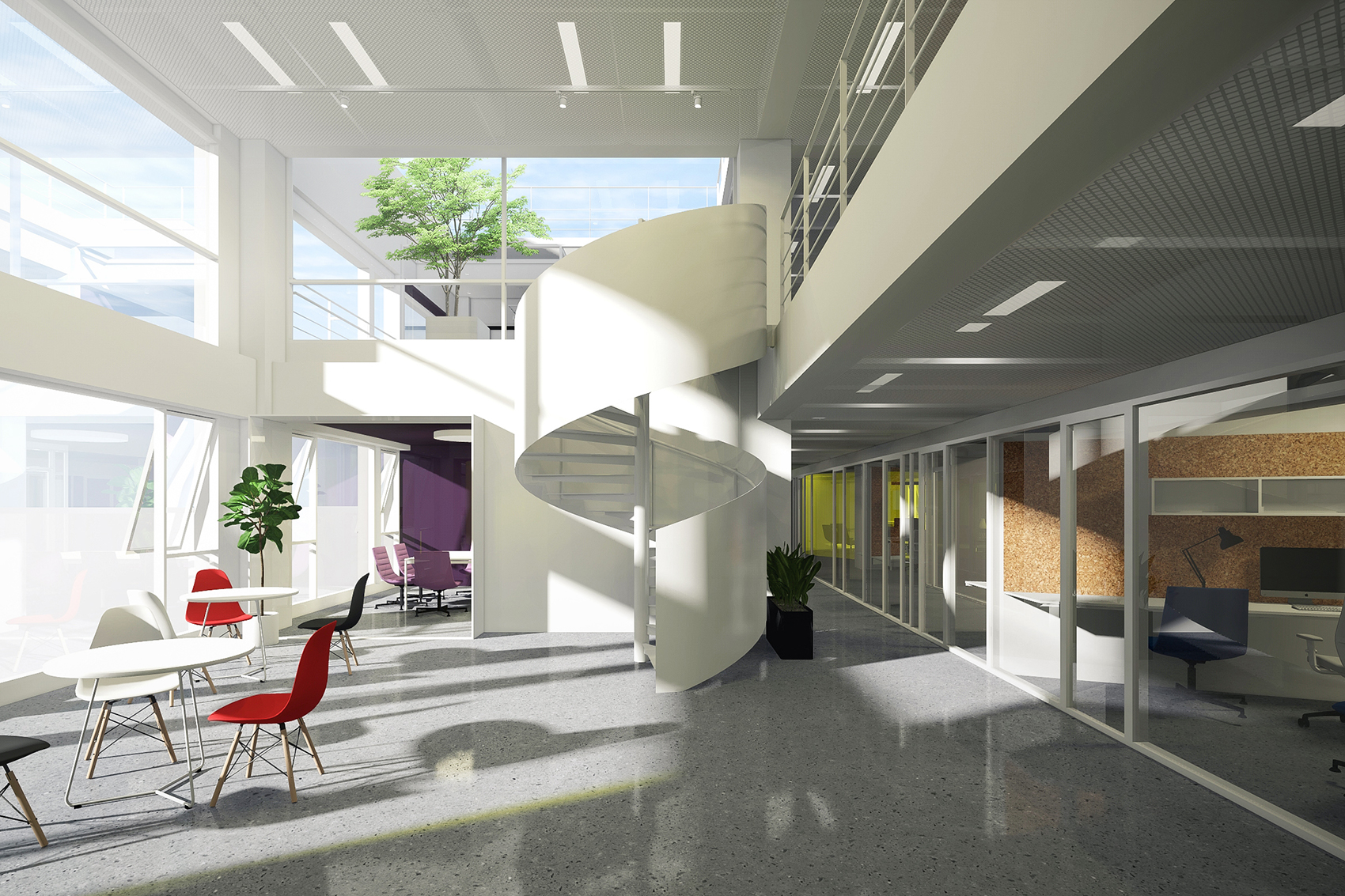
由五樓大廳看六樓庭院 Viewing 6F courtyard from 5F hall ?柯笠建筑 Atelier LI
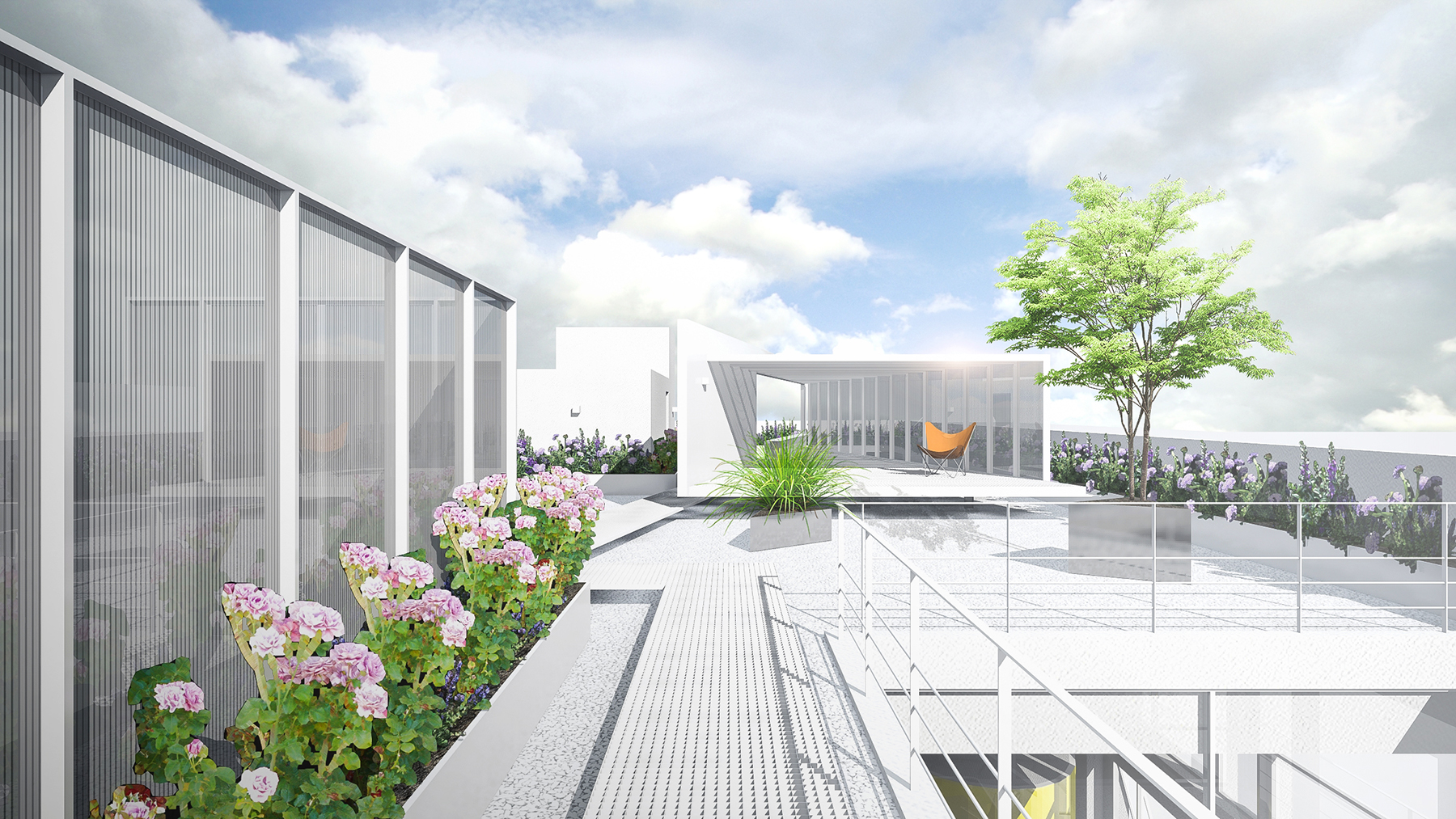 屋頂花園 Roof garden ?柯笠建筑 Atelier LI
屋頂花園 Roof garden ?柯笠建筑 Atelier LI
項(xiàng)目的設(shè)計(jì)范圍是一座6層辦公樓的5-6樓以及屋頂,位于上海青浦。如何讓沒(méi)有豎向聯(lián)系的兩個(gè)樓層以及屋頂層產(chǎn)生空間互動(dòng),是這次改造的設(shè)計(jì)目標(biāo)。我們的策略是將一塊6樓樓板和相鄰的一塊屋面拆除,以獲得一個(gè)兩層通高的大廳和位于6樓的天井庭園,由此建立了從5樓大廳-6樓庭園-屋頂花園的立體空間聯(lián)系。在6樓植入的這個(gè)內(nèi)庭院,在景觀視線上可以為5樓大廳、6樓走廊及會(huì)議室共享。
The design scope of this project is 5F, 6F and the roof of a six-story office building in Qingpu, Shanghai. How to produce spatial interaction among two floors and the roof having no vertical connection is the design objective of this transformation project. Our strategy is to remove one piece of floor-slab of 6F and a piece of roof situated aside to obtain a double-height hall and a courtyard on 6F, which builds vertical connection for spaces from 5F, 6F to the roof floor that is designed as a garden. The courtyard inserted on 6F provides view, which can be shared by the hall on 5F, the corridor and the meeting room on 6F.
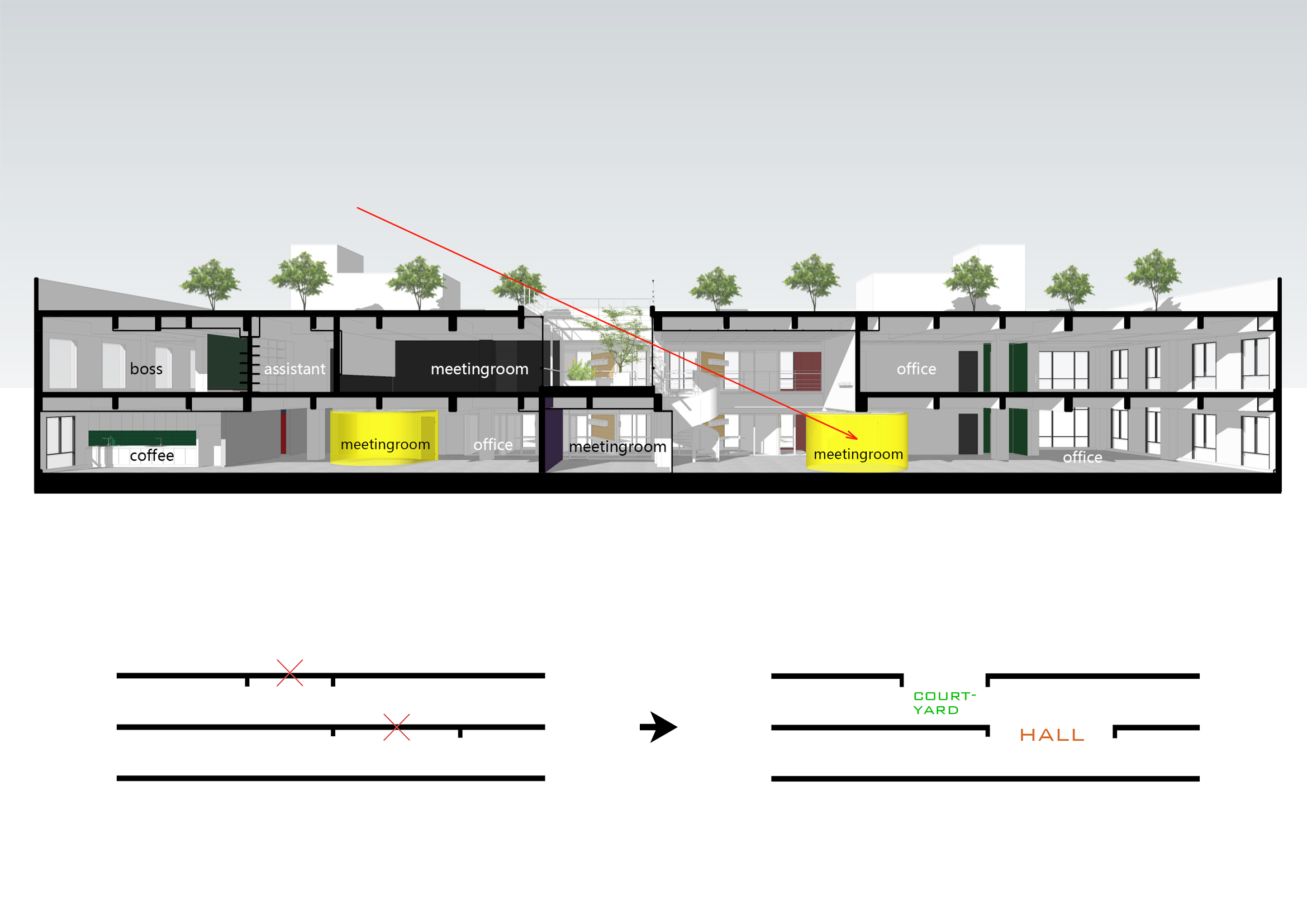 剖面分析圖 Section analysis ?柯笠建筑 Atelier LI
剖面分析圖 Section analysis ?柯笠建筑 Atelier LI
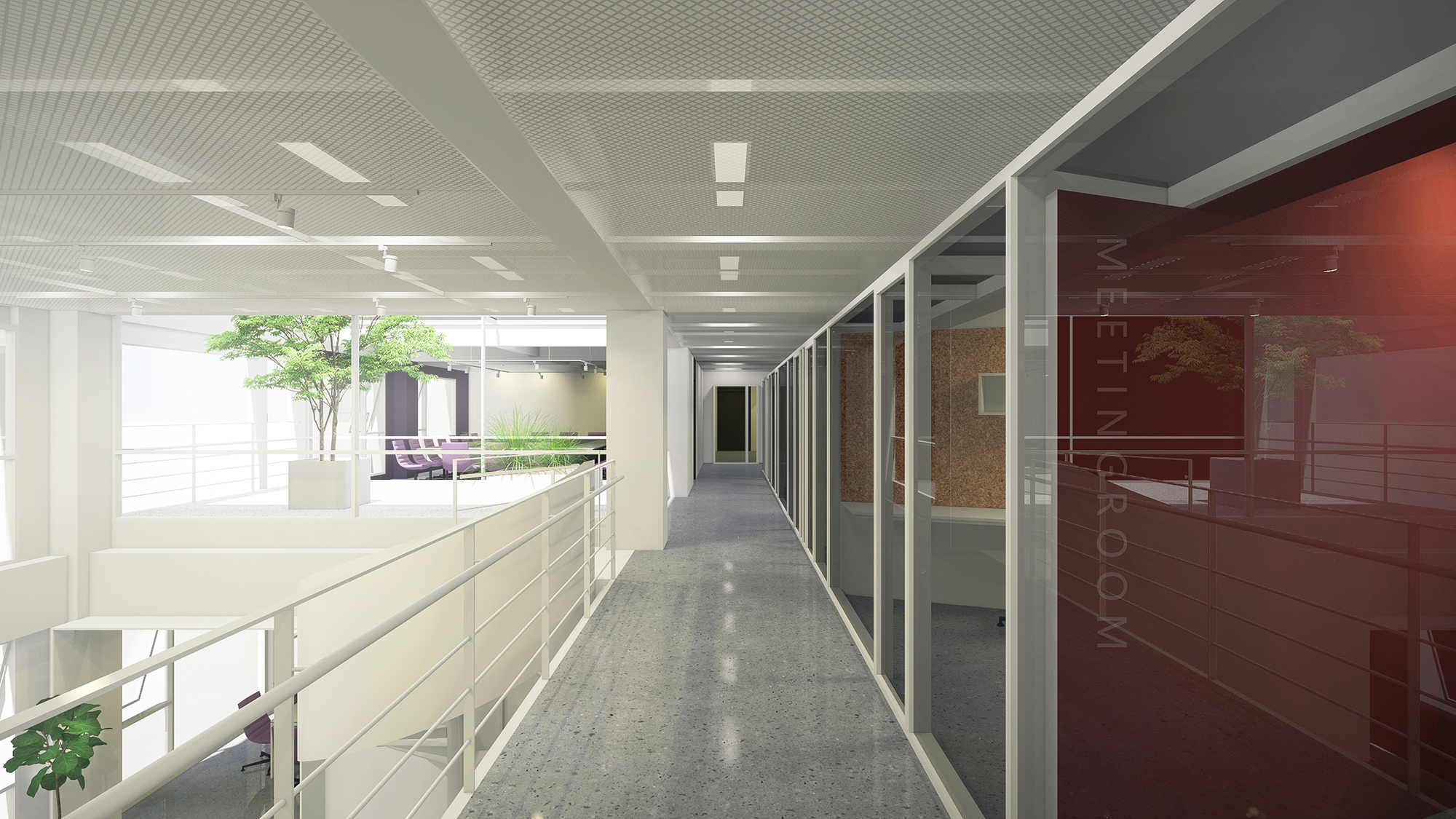 六樓走廊 6F corridor ?柯笠建筑 Atelier LI
六樓走廊 6F corridor ?柯笠建筑 Atelier LI
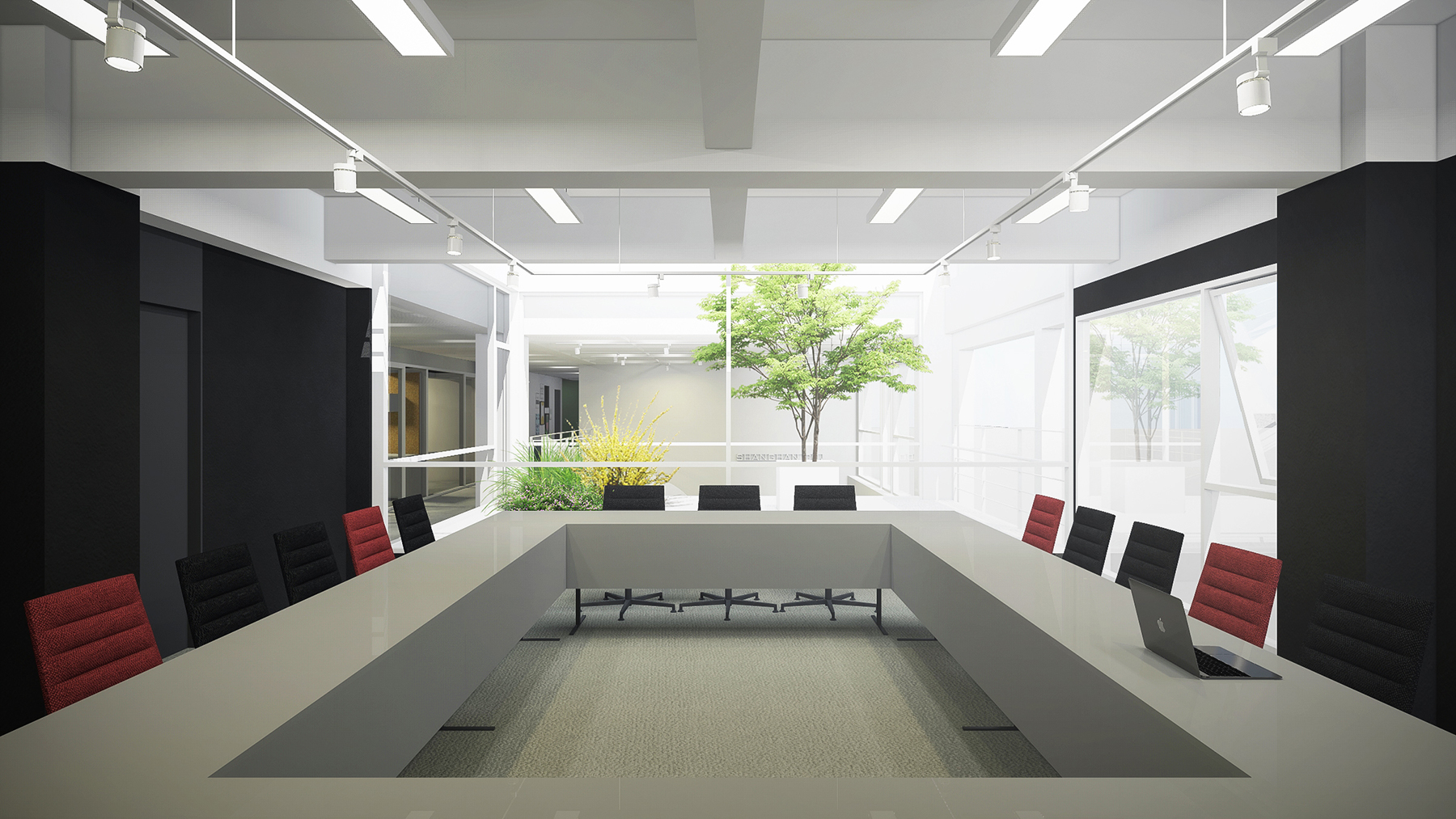 由六樓會(huì)議室看庭院 Viewing the courtyard from 6F meeting room ?柯笠建筑 Atelier LI
由六樓會(huì)議室看庭院 Viewing the courtyard from 6F meeting room ?柯笠建筑 Atelier LI
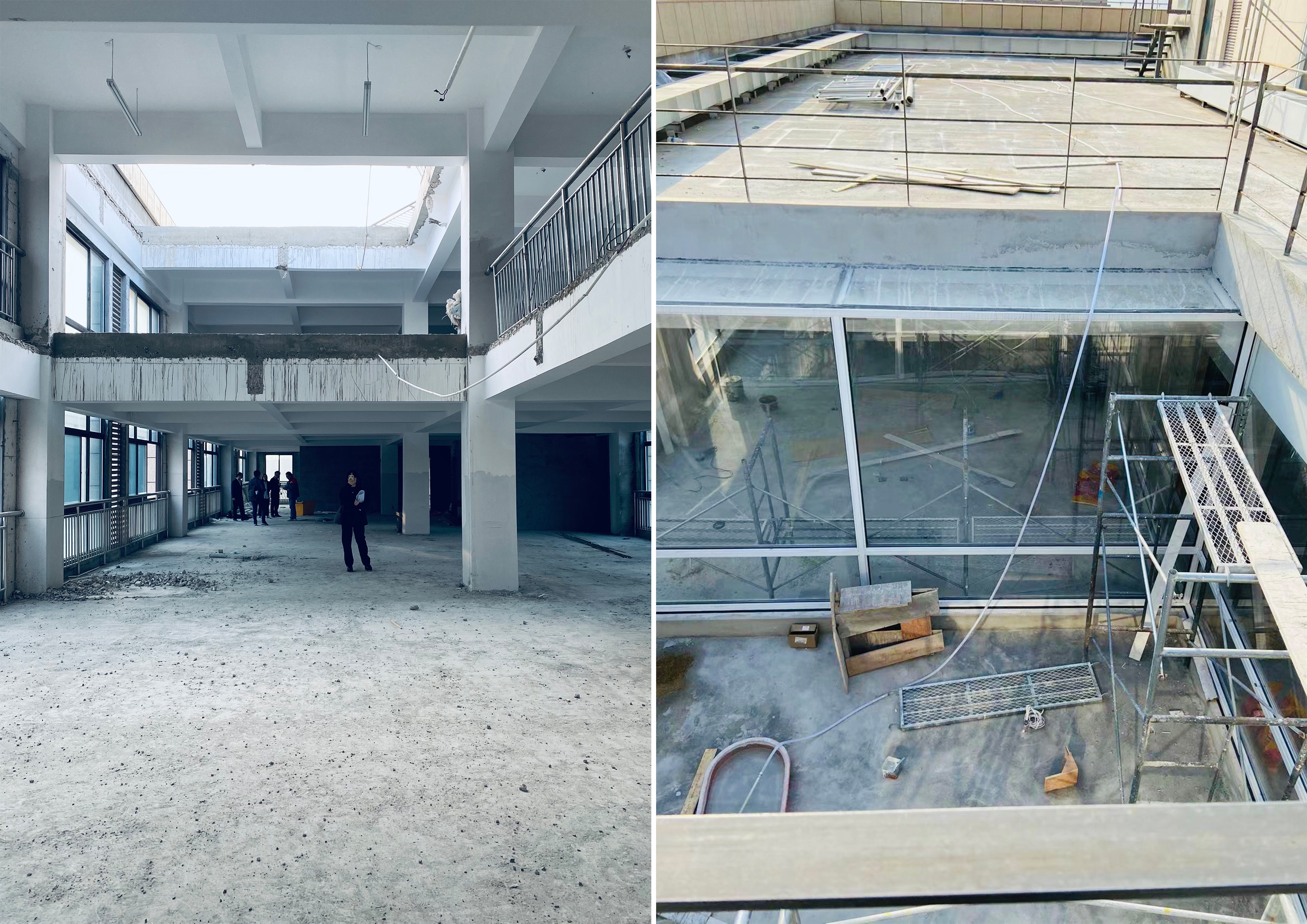 工地 Work site ?柯笠建筑 Atelier LI
工地 Work site ?柯笠建筑 Atelier LI
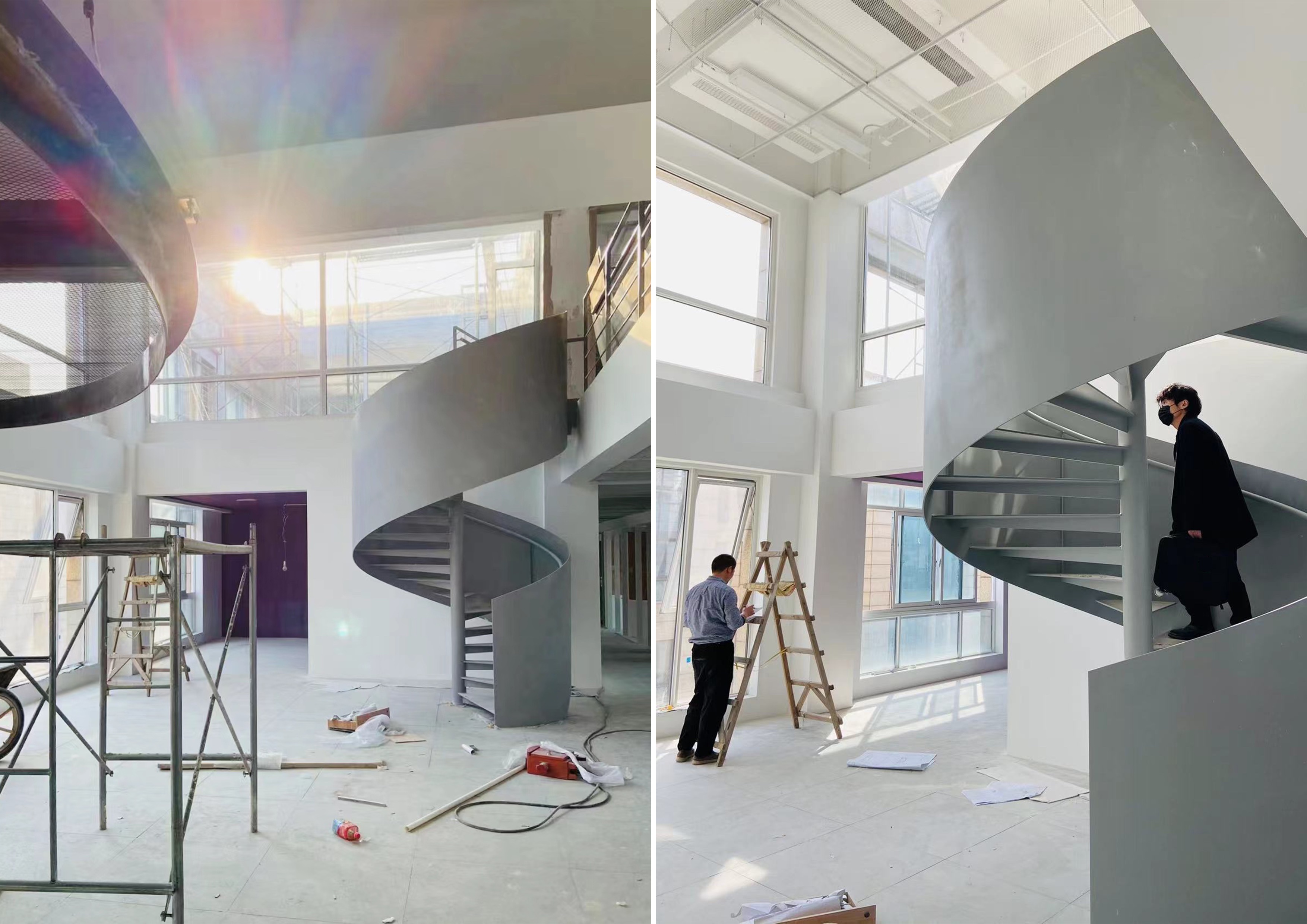 工地 Work site ?柯笠建筑 Atelier LI
工地 Work site ?柯笠建筑 Atelier LI
屋頂花園是這個(gè)項(xiàng)目的設(shè)計(jì)重點(diǎn),我們希望在這座辦公樓的屋頂呈現(xiàn)一片超日常的庭園,在滿足企業(yè)高層休憩使用的同時(shí),給整個(gè)辦公園區(qū)帶來(lái)美學(xué)上的驚喜。
The roof garden is the key point of this project. We hope to realize a garden that is beyond daily life on the roof of this building. It will bring aesthetic surprise for the whole enterprise campus when meeting the needs for relaxing of the company executives.
 屋頂場(chǎng)地原貌,Original site of the roof ?柯笠建筑 Atelier LI
屋頂場(chǎng)地原貌,Original site of the roof ?柯笠建筑 Atelier LI
 屋頂花園, 看向亭子M Roof garden, viewing Pavilion M ?柯笠建筑 Atelier LI
屋頂花園, 看向亭子M Roof garden, viewing Pavilion M ?柯笠建筑 Atelier LI
整個(gè)屋頂區(qū)域被庭院的洞口分為兩部分。我們?cè)谄渲懈髟O(shè)置了一個(gè)三角形的鋼結(jié)構(gòu)亭子,和聯(lián)系它們的折線形步道一起輕輕漂浮在白色的砂石地面上。
The roof floor is divided into two parts by the courtyard. We place in each part a triangular pavilion made of steel structure, floating lightly above the gravel floor with the walkway in the shape of polyline, which connects the two pavilions.
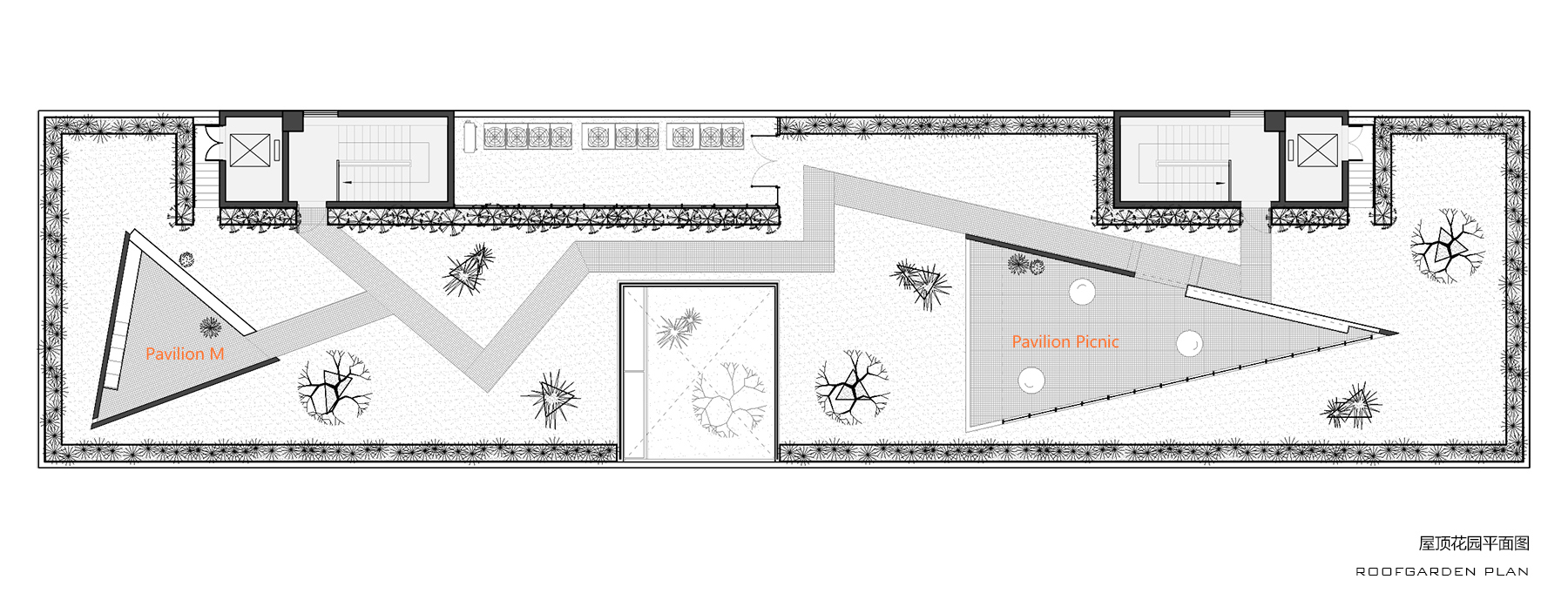
屋頂花園平面圖 Roof garden plan ?柯笠建筑 Atelier LI
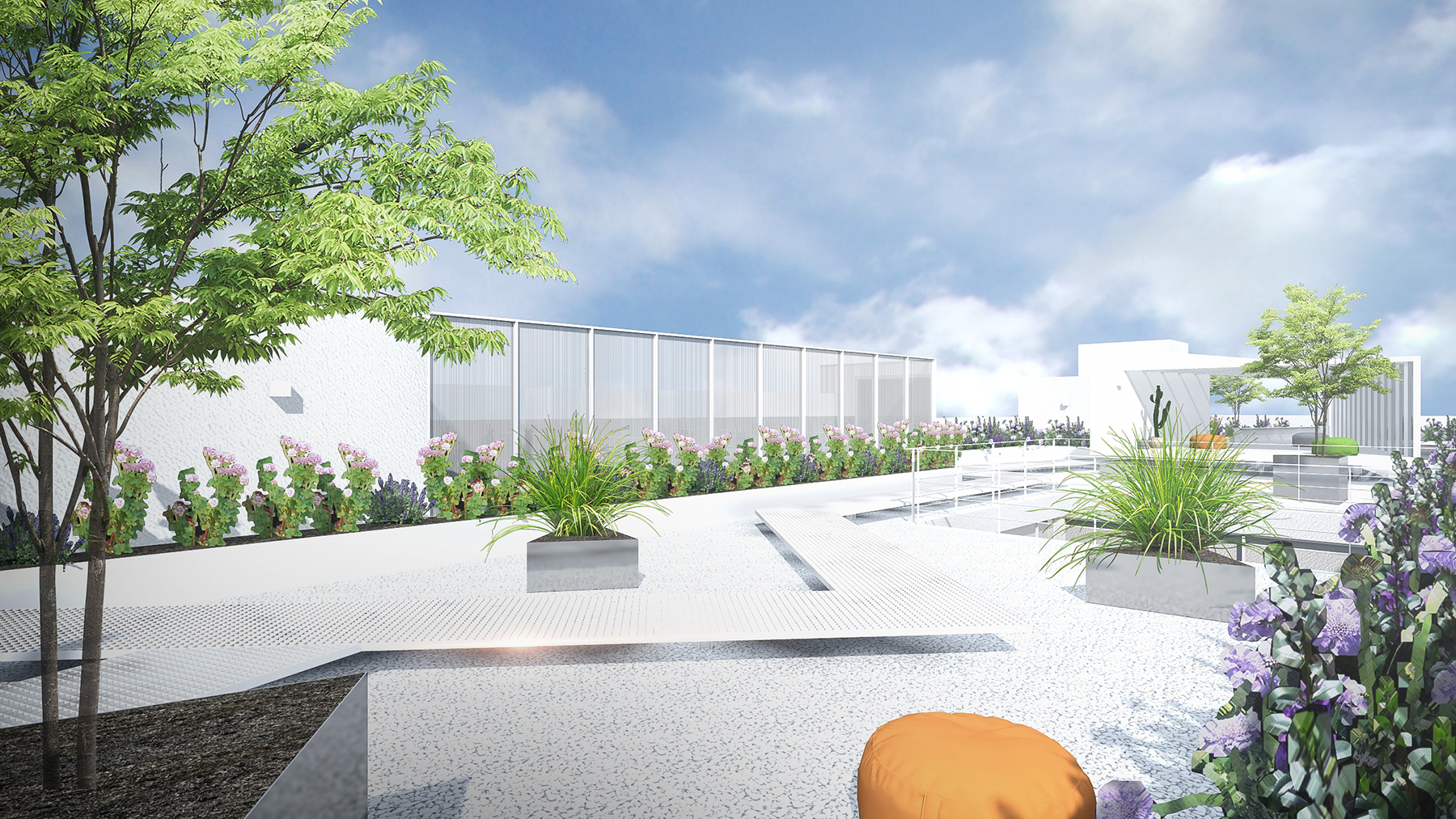 屋頂花園 Roof garden ?柯笠建筑 Atelier LI
屋頂花園 Roof garden ?柯笠建筑 Atelier LI

亭子Picnic Pavilion Picnic ?柯笠建筑 Atelier LI

亭子Picnic Pavilion Picnic ?柯笠建筑 Atelier LI
屋頂?shù)囊蝗υO(shè)置白色種植箱,植物帶將花園意境與外部隔開(kāi);中間區(qū)域點(diǎn)綴一些三角形的不銹鋼種植箱,種植小樹(shù)和灌木,在花園中浮游。
White planting boxes are placed on the periphery of the roof, plantation belts separate the artistic conception of the garden from the outside. Triangular stainless-steel planting boxes are interspersed in the middle, with little trees and shrubs planted, floating in the garden.
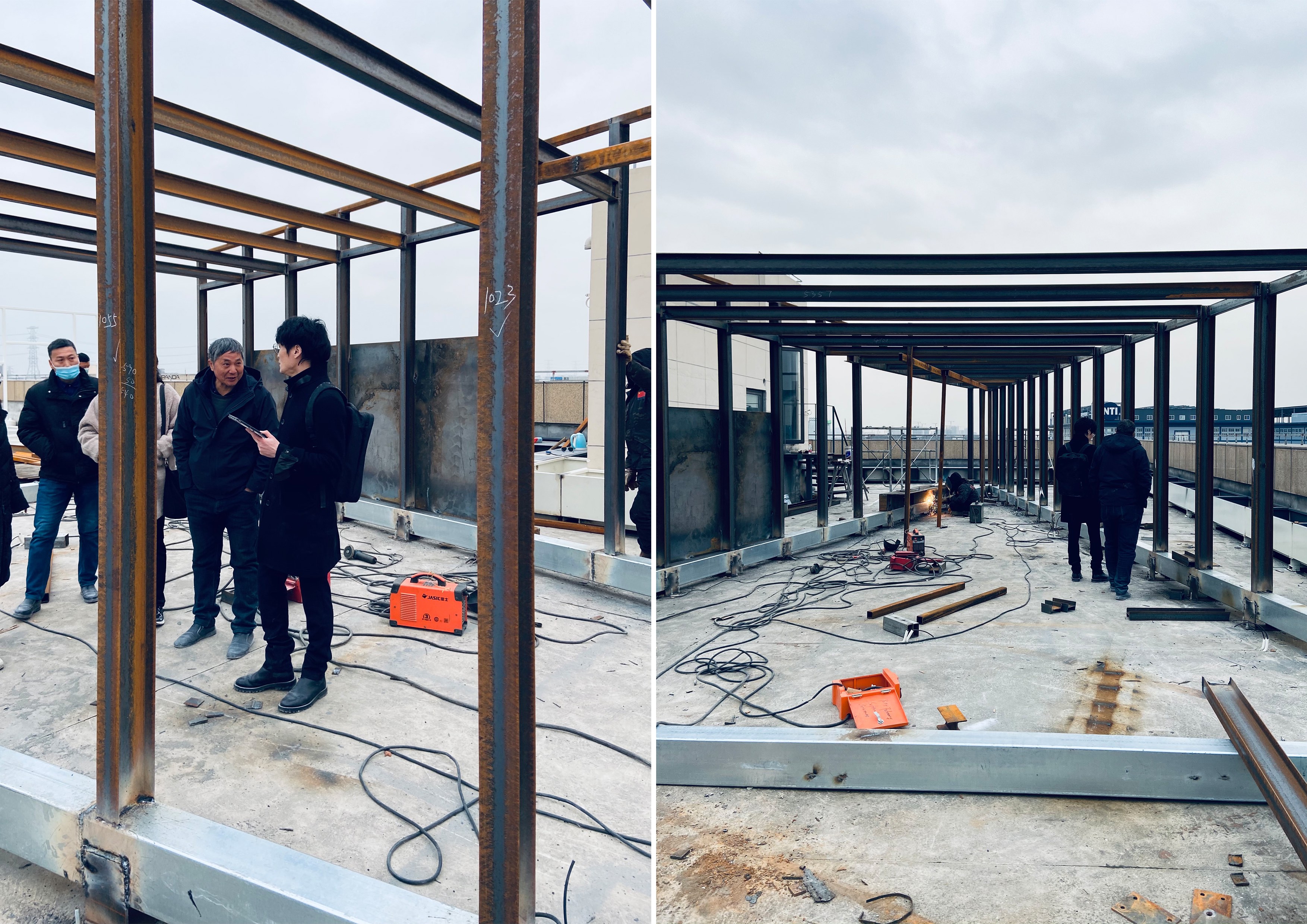 亭子Picnic Pavilion Picnic ?柯笠建筑 Atelier LI
亭子Picnic Pavilion Picnic ?柯笠建筑 Atelier LI
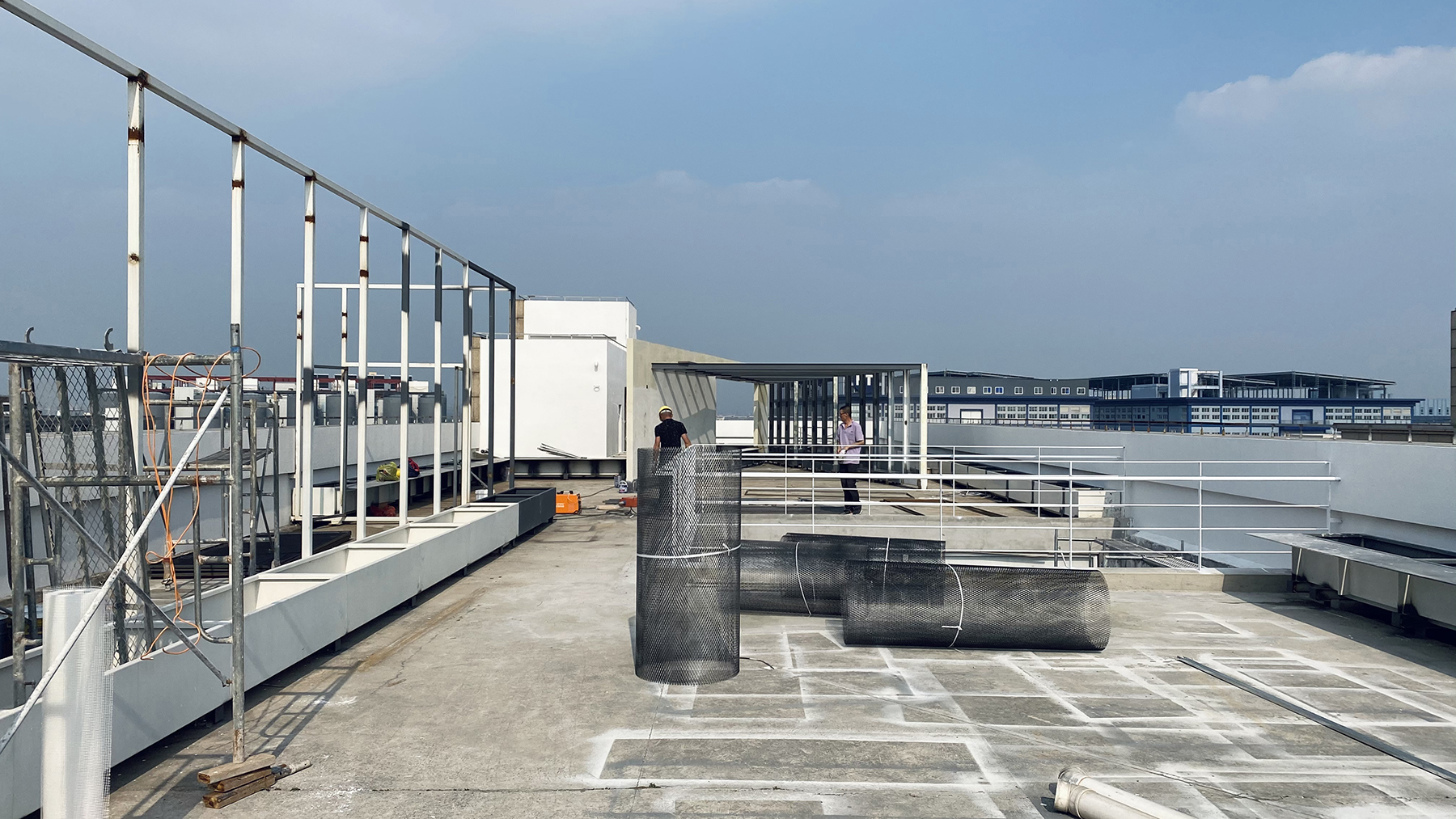 工地 Work site ?柯笠建筑 Atelier LI
工地 Work site ?柯笠建筑 Atelier LI
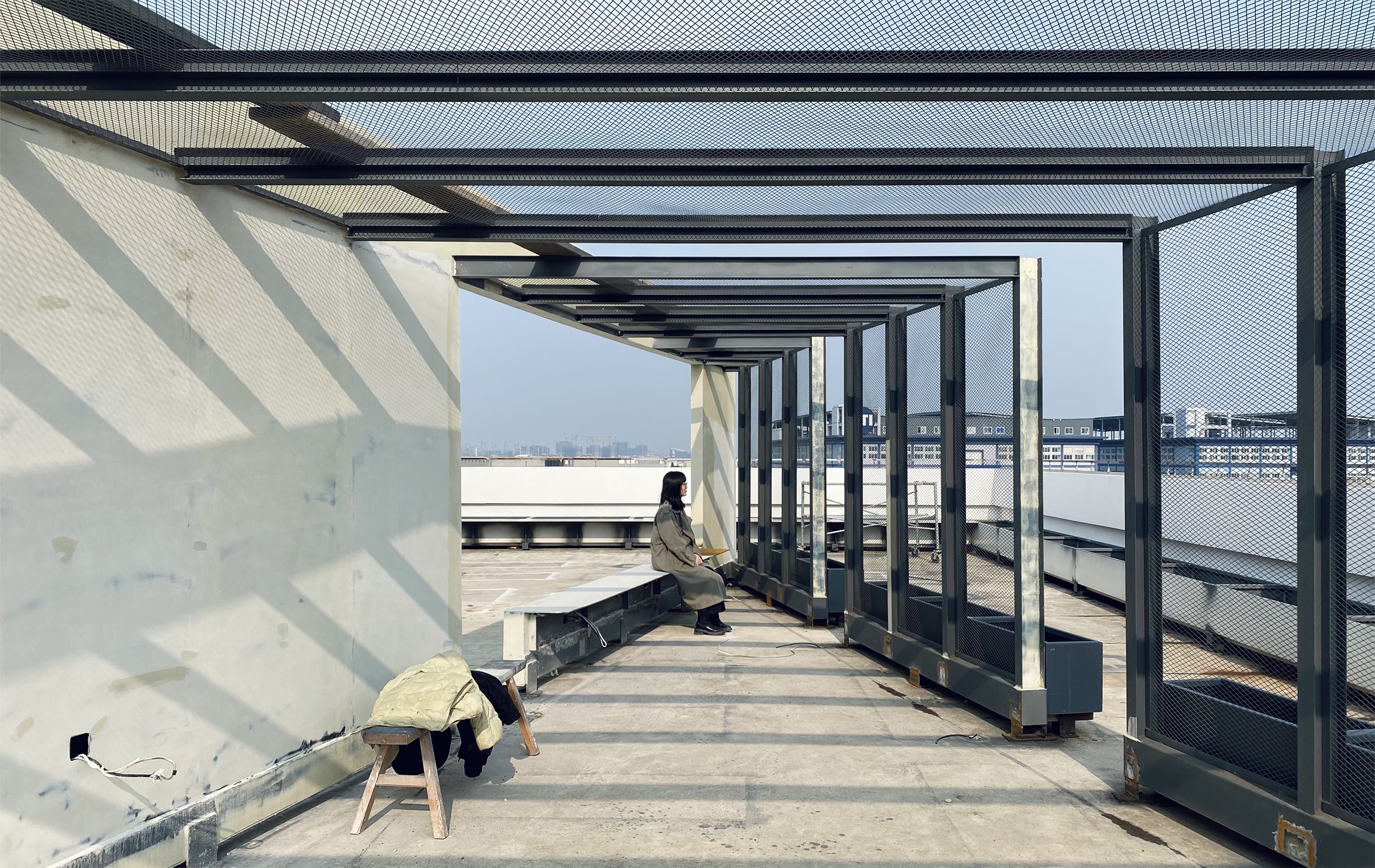 工地 Work site ?柯笠建筑 Atelier LI
工地 Work site ?柯笠建筑 Atelier LI
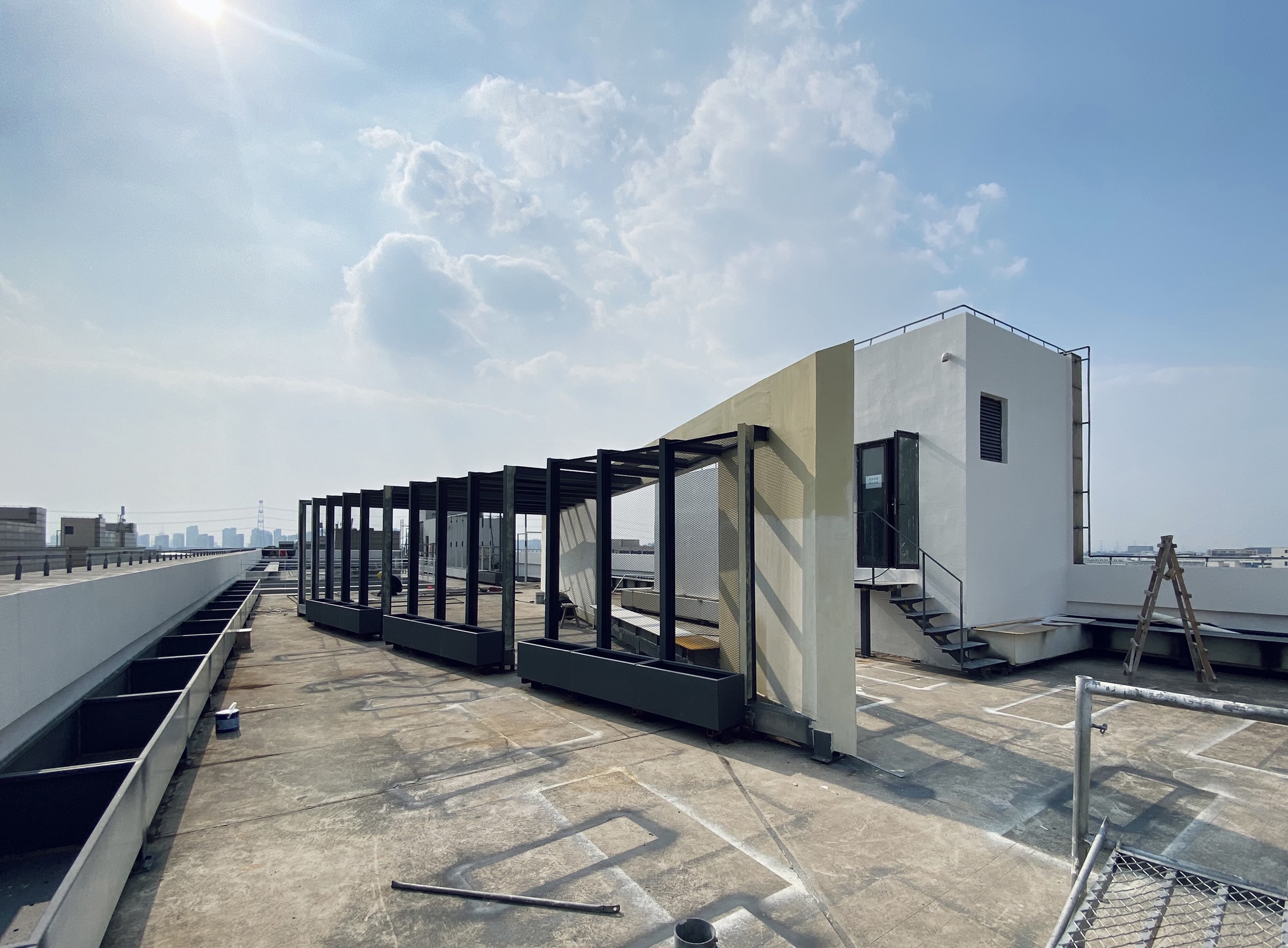
工地 Work site ?柯笠建筑 Atelier LI
05 上海浦東田園住宅(建成)
Pudong Villa(Built)
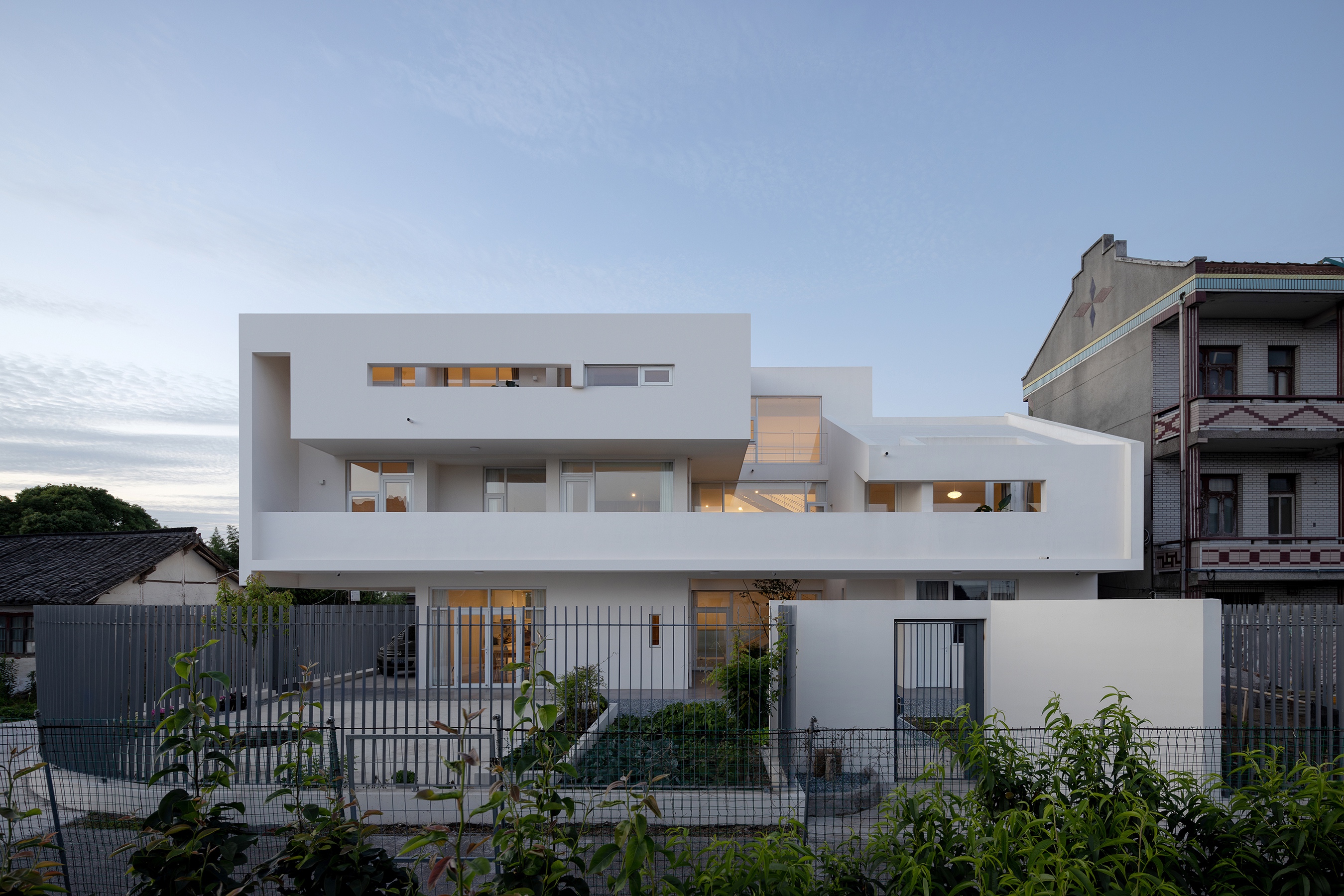
南立面,South Elevation ? WM STUDIO
作為一個(gè)上海郊外的自建別墅項(xiàng)目,我們希望在有限的條件下,在設(shè)計(jì)中營(yíng)造園林的意境。通過(guò)在不同的樓層植入內(nèi)庭院和天井,點(diǎn)綴綠植,建筑的室內(nèi)外空間產(chǎn)生了微妙的滲透和相融。強(qiáng)烈而明確的白色建筑體塊成為了容器,包含著幾個(gè)內(nèi)庭院和天井,并以其為內(nèi)核形成穩(wěn)定的內(nèi)在氛圍,從而產(chǎn)生所追求的意境。
As a project of self-built villa in the suburb of Shanghai, we hope to create garden-atmosphere under limited conditions. Delicate permeation and integration are formed between interior and exterior spaces of the villa by inserting courtyards in different floors and interspersing greenery. The white architectural volume that is intense and explicit becomes a container, containing several courtyards, forming stable inner atmosphere with courtyards as core, so that the artistic conception we pursue is realized.
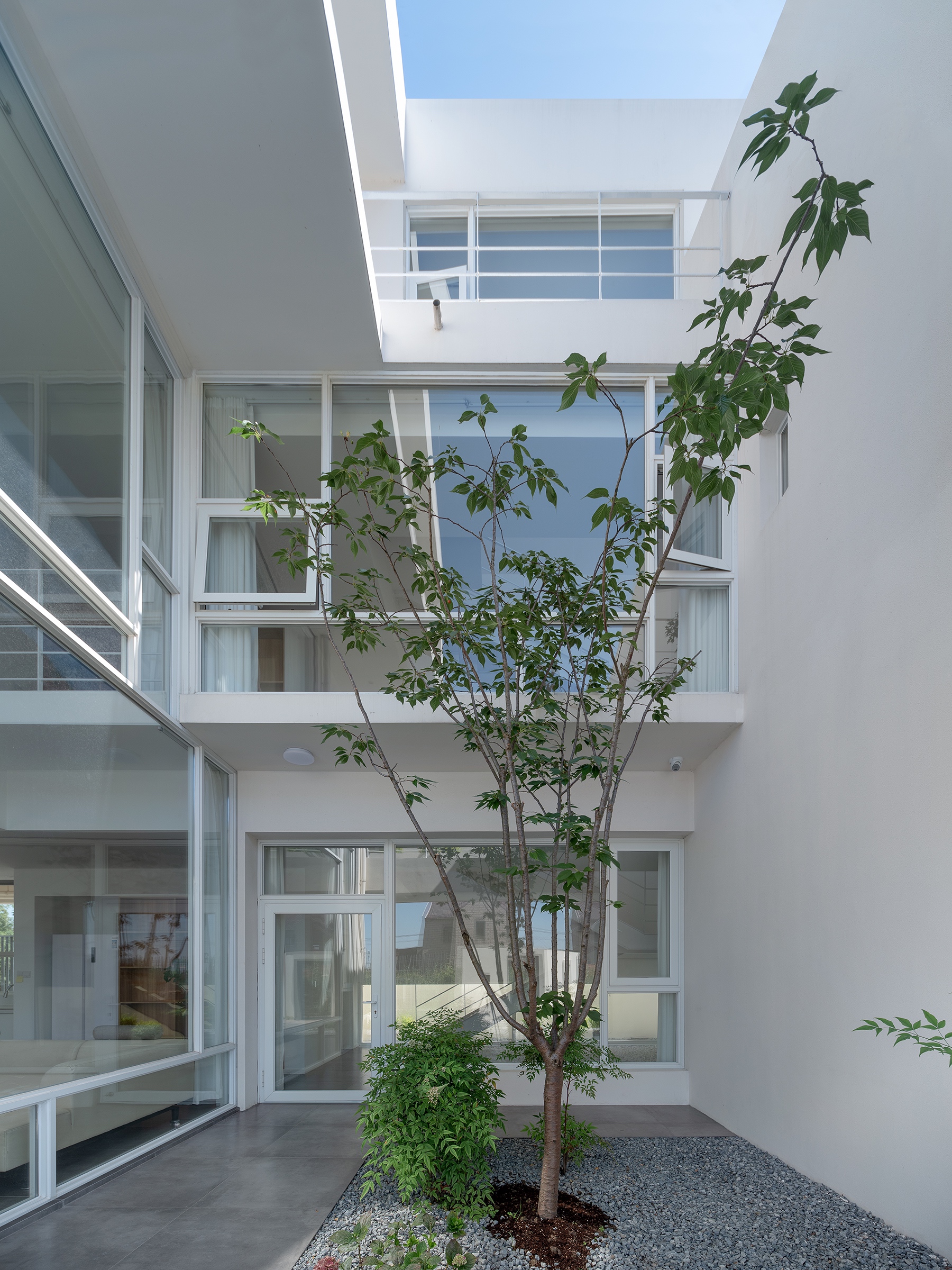 主庭院,Main Courtyard ? WM STUDIO
主庭院,Main Courtyard ? WM STUDIO
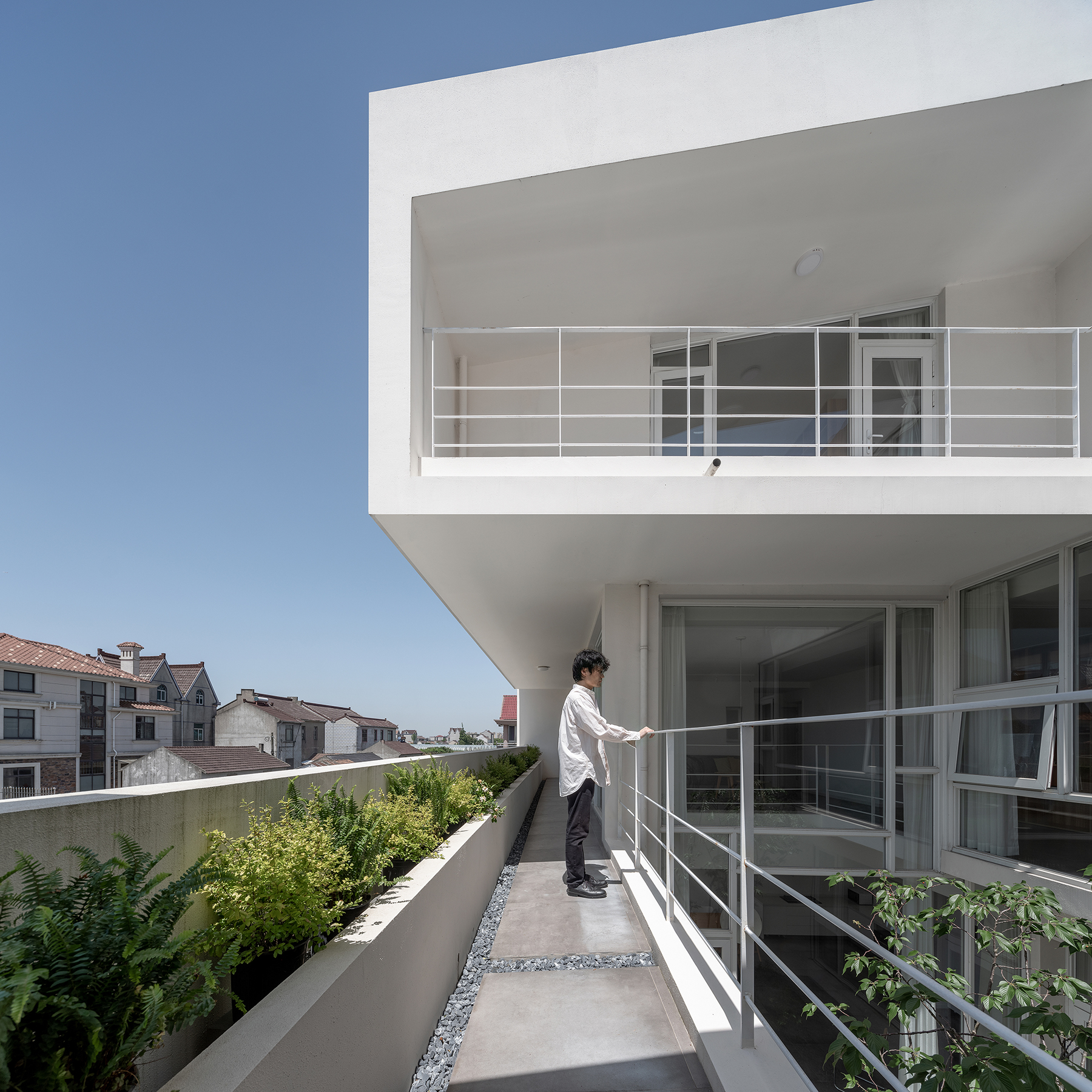
二層連廊,2nd Floor Passage ? WM STUDIO
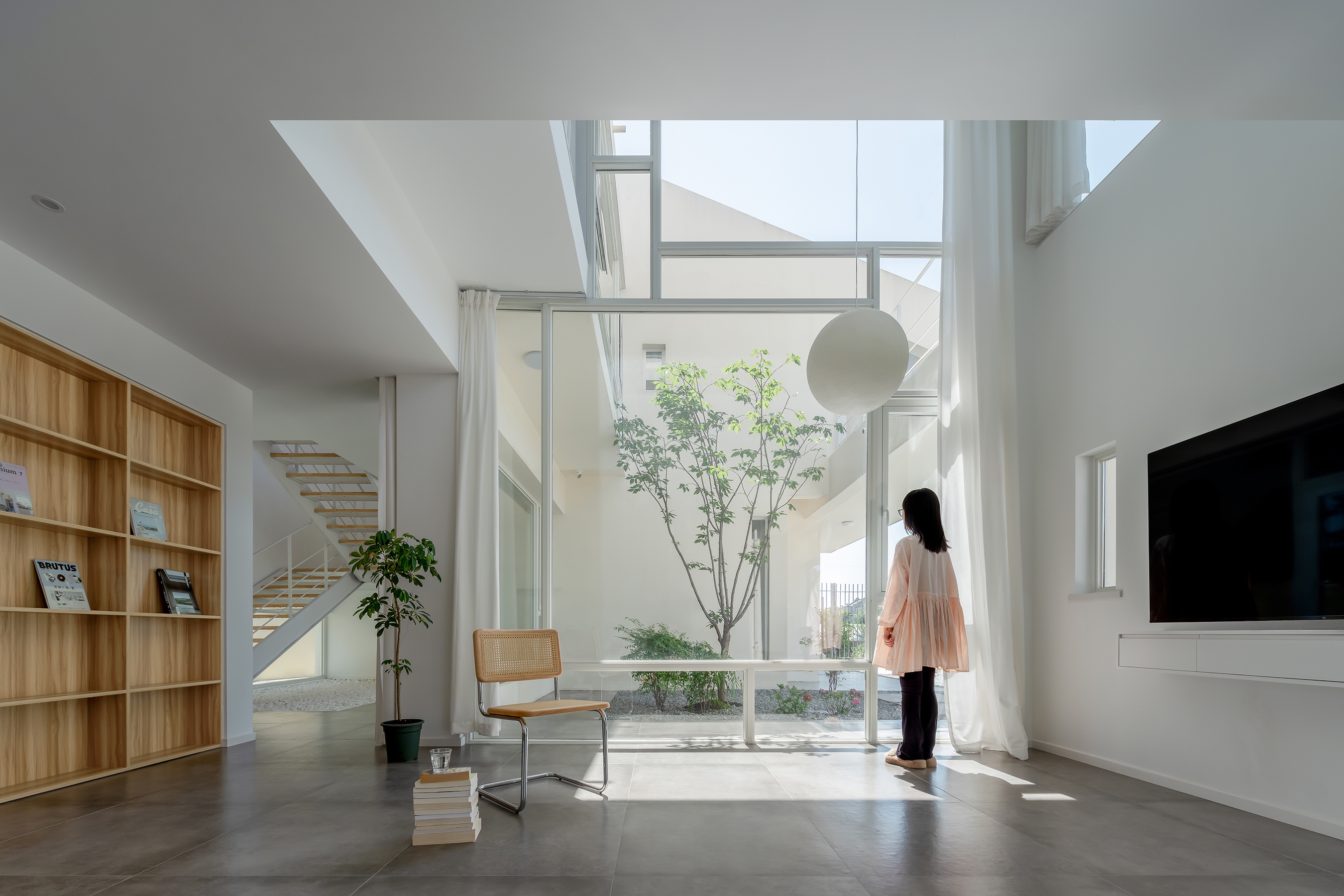
一層起居室,1st Floor Living Room ? WM STUDIO
 二層連廊,2nd Floor Passage ? WM STUDIO
二層連廊,2nd Floor Passage ? WM STUDIO
從一畝園到Pudong Villa,從方案到建造落地,是一系列根莖式的、游牧式的創(chuàng)作實(shí)踐。在每個(gè)項(xiàng)目不同的背景和條件下,我們對(duì)園林不斷地進(jìn)行解域,與現(xiàn)代系統(tǒng)中不同的粒子相遇再結(jié)域,每次的逃逸線無(wú)法預(yù)測(cè),會(huì)得到不同的結(jié)果,無(wú)法搜尋和論證譜系,仿佛繪制著一張不確定的地圖,進(jìn)行一場(chǎng)園林游牧。
From One Mu Garden to Pudong Villa and from concept to building, these projects are a series of creation and practice, which is rhizomatous and nomadic. In different contexts and under different conditions, we deterritorialize constantly classic garden and reterritorialize it when meeting different particles of modern system. Each time the lines of flight cannot be predicted and we get different results. To seek and to demonstrate the pedigree are impossible, so our creation is like drawing an uncertain map to perform a garden nomad.
項(xiàng)目名稱(chēng):Garden Nomad, 從一畝園到Pudong Villa
項(xiàng)目類(lèi)型:項(xiàng)目合輯
設(shè)計(jì)方:柯笠建筑 Atelier LI
公司網(wǎng)站:www.atelierli.cn
聯(lián)系郵箱:atelierli@126.com
項(xiàng)目設(shè)計(jì):2016-2021
完成年份:2023(Pudong Villa)
主創(chuàng)設(shè)計(jì)師:李柏、李璇
圖片版權(quán):柯笠建筑 Atelier LI,WM STUDIO
Project name: Garden Nomad, From One Mu Garden to Pudong Villa
Project type: Five Projects
Design: Atelier LI
Website: www.atelierli.cn
Contact e-mail: atelierli@126.com
Design year: 2016-2021
Completion Year: 2023 (Pudong Villa)
Leader designers: Bai LI & Xuan LI
Photo credit: Atelier LI, WM STUDIO
發(fā)文編輯/網(wǎng)站審核|Yirou 版權(quán)?建道筑格ArchiDogs,轉(zhuǎn)載請(qǐng)聯(lián)系media@archidogs.com 若有涉及任何版權(quán)問(wèn)題,請(qǐng)聯(lián)系media@archidogs.com,我們將盡快妥善處理。

